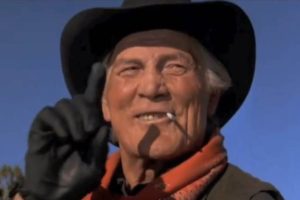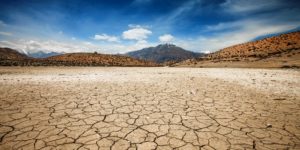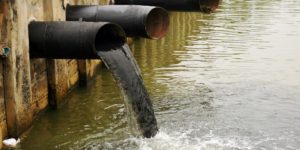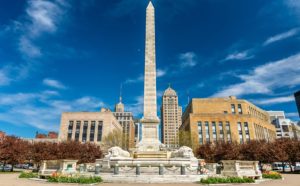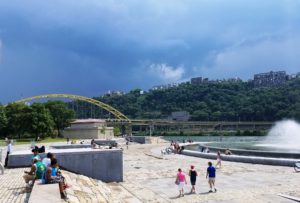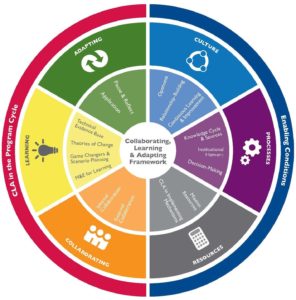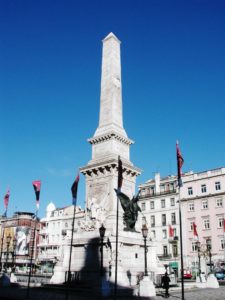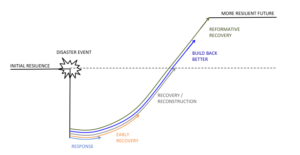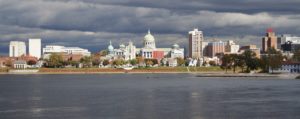Does your city or region have some efforts for revitalization (healing),
and others for resilience (prevention)? That’s inefficient, and likely to fail.
They can and should be achieved together. RECONOMICS shows you how.
If you have ANY role in improving your local future, you need to read this.
After 20 years as an author, publisher, speaker, trainer and advisor on regenerative economics worldwide, I offer this illustrated, online version of my third book (buy it here) to help your government, charity or company boost economic, environmental and social health in regions and communities.
“RECONOMICS: The Path to Resilient Prosperity” is a guide to healing economies, societies and nature for policymakers, real estate investors and entrepreneurs. What it reveals can easily double the ROI (revitalization on investment) of your redevelopment, renewal and climate adaptation efforts.
by Storm Cunningham, Publisher, REVITALIZATION Last updated: November 14, 2021
Why didn’t your downtown beautification, historic restoration or mixed-use redevelopment revive your community?
Probably because you lacked a regenerative strategy and a proven process to fully fund and implement revitalization.
It’s common for places to receive funding for renewal or resilience. It’s rare for them to know how to leverage it.
“RECONOMICS should be mandatory reading for all Mayors, Chief Executives and Directors of Planning in cities and regions.”
– Rick Finc, Principal, RFA Development Planning, Edinburgh, Scotland
“RECONOMICS is very concentrated, highly sophisticated, and stunningly accurate.”
– Merrit Drucker, Clean & Green Coordinator at Anacostia Waterfront Trust, Washington, DC
“Storm Cunningham’s RECONOMICS transformed our latest project, which uses his 3Re strategy.”
– Doumafis F. Lafontant, Director, Lower Roxbury Coalition, Boston, Massachusetts
“RECONOMICS is a must-read for every mayor, resilience activist, planning commissioner and urban redevelopment professional who has been frustrated in their attempts to revitalize a place. It succinctly describes why most revitalization plans fail,
analyzes what’s missing, and provides a simple, easy-to-follow strategic process for success.”
– Kevin L. Maevers, D.Mgmt., AICP; President, Arivitas Strategies, LLC, La Quinta, California;
Vice Director of Policy, IES, California Chapter, American Planning Association
“RECONOMICS hits the nail on the head!”
– Nalin Seneviratne, Director of City Centre Development, Sheffield City Council, Sheffield, England
“Storm Cunningham’s RECONOMICS Process raises the bar for community and regional revitalization. It’s a powerful package, succinctly capturing the process that we have doggedly tried to identify over time, not always knowing the next step.
The RECONOMICS Process brings a holistic dimension to redevelopment, inextricably linking vision and task.”
– Eric Bonham, P.Eng, Board member of the Partnership for Water Sustainability in British Columbia
Former Director, BC Ministry of Environment and BC Ministry of Municipal Affairs
“Storm Cunningham is so far ahead of the community revitalization game, I’m in awe.”
– Sarah Sieloff, Executive Director, Center for Creative Land Recycling (September 2019)
A strategic renewal process is how a place revitalizes when it has no money,
and how it revitalizes faster, better, safer and more efficiently when it has funding.
Only a strategic renewal process can integrate economic growth with resilience to create Resilient Prosperity.
TABLE OF CONTENTS
- PREFACE - The Holy Grail: A reliable process for fixing economies, societies, nature & climate together.
On the last day of 2019, exactly 3 weeks before this book was published, the lights went out and ferry service stopped in the town of Little Bay Islands, Nova Scotia. Permanently.
This picturesque array of brightly-painted fishing houses on narrow streets on Canada’s North Atlantic coast is dead: purposely abandoned, as all 51 residents left at the same time.
Once a thriving fishing village, it was killed by the decline of the local fishery. This led to the loss of job opportunities, which led to the loss of young people, which led to the loss of confidence in the community’s future. In 2019, residents voted in favor of resettlement elsewhere.
They once had prosperity, but it wasn’t resilient prosperity. If the fishery had been restored, that would have restored jobs, young people and confidence in the future in one fell swoop. That’s how a restoration economy works.
Thousands of communities around the world have, for decades, been on a “Holy Grail” quest without knowing it. All of them want two things: 1) resilient prosperity and 2) an efficient, reliable process to produce it.
- Resilient Prosperity: No matter whether a place is thriving or distressed, all want a higher quality of life and a more vibrant, inclusive economy: in other words, revitalization. And they want it to last in the face of national economic cycles, political turmoil and the climate crisis. In other words, resilience. Thus, the universal goal is “resilient prosperity” (though few have clarified their thinking enough to use that phrase).
- Strategic Process: Every public leader knows that the reliable production of anything requires a process, whether it’s a factory producing air conditioners, a tailor producing clothing or a tree producing nuts, wood and oxygen. They also know, deep down, that they have no real strategy or reliable process for producing either revitalization or resilience in their community (though few would acknowledge it).
I’ve spent the past 20 years leading workshops, keynoting summits and consulting in planning sessions at urban and rural places worldwide. All of these events were focused on some aspect of creating revitalization or resilience. Most of those events had other speakers who recounted their on-the-ground efforts and lessons learned. I’ve thus spent the past two decades researching commonalities: what’s usually present in the successes, and what’s usually missing in the failures?
I’ve boiled it down to six elements. Each of them individually increases the likelihood of success. The more of them you have, the more likely you are to succeed. All of them together creates a process that’s far more dynamic than the sum of its parts. If you’re a community leader, you can thus start assembling the locally-missing pieces of the process in whatever order makes sense—and is least disruptive—for your situation.
Many mayors, governors and presidents have intuitively tried to form such a process. Most had two or three of the six elements. Some had four or five: none had all. Even in those few places that came close, the elements didn’t form a process. They were disjointed—usually spread over a long period of time—and had no logical order. In other words, they had the body parts, but no fully-functional body. Thus, they often went nowhere…or not very far. No process = no progress.
I have encountered a few effective renewal processes, but they only address very limited scopes—such as revitalizing downtowns, redeveloping old industrial sites or restoring wetlands—and for very specific kinds of assets, such as brownfields, infrastructure or heritage. Processes for regenerating entire communities or regions seem to be entirely missing.
The goal of creating resilient prosperity for all is obviously of vital importance. So why are efforts to create a process for revitalization or resilience so haphazard? Two reasons: 1) They didn’t consciously know that creating a process was what they were trying to do; and 2) They didn’t have an ideal process template to shoot for. It’s been like trying to assemble a jigsaw puzzle without knowing what it was supposed to look like when finished.
– Kurt Lewin, German-American psychologist.
That’s the focus of this book: to present that ideal process for producing resilient prosperity. Like all good processes, it can be adapted to local goals and constraints: it’s the basic flow that’s of crucial importance, not the specific activities that ensue. Most newly-established processes of any kind will accrue elements as they mature. The key is to put the right bones in place initially: the flesh can develop over time. Thus, the process recommended here is a “minimum viable process”: you can add to it if necessary, but deleting even a single element will drastically reduce its effectiveness.
Without a process to connect to, projects tend to wither on the vine from lack of support. Or, projects die because they expend too many resources reinventing functions that should have been provided by a local renewal process. Or, lacking a local “flywheel,” projects don’t add momentum, so confidence in a better future doesn’t increase; residents and employers leave and new ones aren’t attracted as a result.
Of course, it isn’t just lack of process that stymies renewal efforts. The list of potential roadblocks is endless: defeatist public attitudes; empty public coffers; unenlightened leadership, etc. But there’s one obstacle that’s as universal as the lack of process: the “assumptions trap”.
People assume that their fellow stakeholders share their definition of “revitalization” or “resilience”…that they’re all heading in the same direction. They assume that their leadership has had some training in the art of renewal: that they know how to make it happen. They assume that someone is in charge of creating a better future. In most places, none of those assumptions is correct. We’ll dive into those problems—and their solutions—later: this is just the Preface.
Why am I the one who’s writing this book, as opposed to someone famous, powerful…or at least good-looking? Because, as a lifelong world traveler, nature lover, and fan of cities with unique cultures and beautiful heritage, I’m frequently horrified when returning to my favorite places, only to find them degraded or destroyed. I seldom SCUBA or snorkel any more: the barren, lifeless sea floors found all around the planet are just too depressing. I’m old enough to remember the vibrant beauty and rich diversity of just four decades ago.
Badly planned (or unplanned) urban growth and poorly-regulated (or unregulated) natural resource extraction—plus the climate crisis—are the usual culprits. But in the 90s, I started perceiving a glimmer of hope. I increasingly encountered places where governments, businesses, and non-profits were restoring nature, restoring heritage, restoring health and beauty, and revitalizing economies.
I decided to champion this nascent trend, starting out with great enthusiasm and confidence when my first book, The Restoration Economy (Berrett Koehler), was published in 2002. It was the first book to document the rise of a vast global trend I dubbed “restorative development”. It described eight huge, fast-growing industries and disciplines that are renewing various aspects of our natural, built and socioeconomic environments.
but “how do we become the best for the world?””
– Uffe Albaek, Founder, The Kaos Pilots.
Some were new industries, like brownfields remediation/redevelopment, which now accounts for some $7 billion in annual activity in the U.S. alone. Some were new sciences, like restoration ecology. Others, such as restoring/reusing historic buildings—or renewing/replacing aging infrastructure—have been around for as long as humankind has been building cities. But even those older forms of renewal have expanded dramatically over the past 20 years, with far more growth to come as a tipping point from degeneration to regeneration nears.
I had found my niche. I’m earning a living I love, being paid well—sometimes over $12,000 for a 60-minute talk—to travel the world as an author, speaker and consultant. I’m not getting rich, but life is good.
One of my more-recent clients, the Partnership for Water Sustainability in British Columbia (PWSBC) recently showed itself to be on the leading edge of watershed restoration. How? By focusing a significant portion of their April 2-4, 2019 conference in Parksville (Vancouver Island) on the subject of regional revitalization.
I was asked to deliver most of that content to an audience that largely comprised Streamkeepers and other technical experts who do the on-the-ground work of restoring watersheds. One might wonder what someone who spends their days moving dirt, reducing pollution, removing invasive species and restoring native species might have in learning how places revitalize themselves socially and economically.
The short answer is that such understanding is the key to attracting more funding and more support (citizen and political) for their watershed projects. If they better-understand how their work contributes to economic renewal and quality of life, they will be far more persuasive when it comes time to justify their budgets. And if they better-understand the process of revitalization, they will know where best to insert themselves into local decision-making.
The major flaw in that last statement is that most places don’t actually have a renewal process. So experts, asset owners and other stakeholders have no efficient way to insert themselves into local regeneration. As a result, they just tend to do a lot of isolated projects, hoping that larger-scale revitalization (or resilience) magically appears as a reward for their hard work. But hope is not a strategy.
Most people who are traditionally seen as being responsible for creating community revitalization—mayors, economic developers, private developers, planners, etc.—don’t actually know how to think about revitalization. Most of them tend to think of it as a goal, rather than as a process. As a result, they have “magical” expectations: they assume that revitalization will automatically emerge if they just keep doing more of whatever it is they know how to do:
- If they’re a mayor, they try to lead the way to revitalization via vision and deal-making;
- If they’re developers, they try to build their way to revitalization;
- If they’re architects or engineers, they try to design their way to revitalization;
- If they’re planners, they write plans as a way to revitalization;
- If they ‘re economics developers, they try to incentivize their way to revitalization;
- If they’re activists, they try to organize or sue their way to revitalization; and
- If they’re ecologists or watershed managers, they try to restore their way to revitalization.
All are doing their best with what they have, but is it enough? Only rarely… when stars align and the right things happen in the right order in the right place at the right time. But we’re talking about the future of the place, and everyone in it. Is hoping for the best the best we can do?
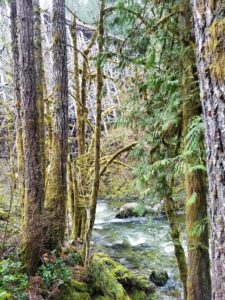
A stream on Vancouver Island, BC with the restored, historic Kinsol Trestle in the background.
Photo by Storm Cunningham.
This lack of process is a wonderful career growth opportunity for those involved in reviving almost anything…whether watersheds, brownfields, heritage, infrastructure, workforce, housing, etc. Being the one at the table who actually understands how to structure local activities to increase the ROI (revitalization on investment) positions you for a real leadership role in your community or region.
The folks who attended any of the three talks and workshops I did for those watershed leaders in British Columbia in April of 2019 now have a greater appreciation of process. If you weren’t there—or at any of my other presentations around the world in recent years—here’s a quick recap of what I told them about creating regional revitalization and resilience.
The first step is to create an ongoing revitalization (or resilience) program, which constantly initiates, perpetuates, evaluates and adjusts local renewal efforts. Without an ongoing program, you have little chance of building momentum, which—as mentioned earlier—is essential to increasing confidence in the future of the place, in order to attract and retain residents, employers and funding.
The first job of that program (which could be housed by a foundation or non-profit organization) is to facilitate a regenerative vision for the future, along with a “renewable asset” map that reveals opportunities to achieve that vision. The second step is to create a regenerative strategy to overcomes obstacles to achieving that vision. Next, it’s best to do some regenerative policymaking, adding support for that strategy (via zoning, codes, ordinances, etc.) while removing policies that undermine it.
Once all of that is done, it’s time to move into action. Recruiting public and private partners into your program is the next step. This provides the human, financial and physical (such as properties) resources needed to do regenerative projects, which are the “final” step of the process. I put “final” in quotes because regeneration is a never-ending activity, so the process is circular, not linear. A place that is no longer revitalizing is devitalizing. Stasis is usually an illusion that masks decline.
Armed with an understanding of the above, those BC Streamkeepers and other watershed heroes are no longer operating in a silo, totally dependent on others to champion, fund and support their work. They are far more capable of being their own champions when face-to-face with funders, politicians and stakeholders.
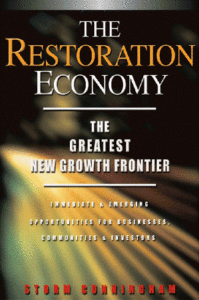 And, they are better able to identify where in the revitalization / resilience process they or their organization should be engaged, in order to be most effective: the program, the vision, the strategy, the policymaking, the partnering or the projects. But let’s back up a bit, for context.
And, they are better able to identify where in the revitalization / resilience process they or their organization should be engaged, in order to be most effective: the program, the vision, the strategy, the policymaking, the partnering or the projects. But let’s back up a bit, for context.
I started writing that first book, The Restoration Economy way back in 1996. Many now-huge regenerative disciplines and industries were just emerging then.
I’ve been enormously gratified to hear from regenerative leaders worldwide, who credit their reading of that 2002 book with the genesis of their career and/or organization.
It apparently helped advance many of today’s regenerative trends, such as resilience, regenerative agriculture (it had a whole chapter on this now-hot trend), circular economies, carbon-negative (climate restoration), heritage renewal, integrated disaster reconstruction, etc. As a result, many leaders who normally would have defaulted to the failed paradigms of “green” and “sustainable”—which helped create today’s global crises by not yielding effective solutions—are now defaulting to restoration. For example, in the November 2019 issue of Fast Company magazine, Kat Taylor, CEO of Beneficial State Bank in Oakland, California said that we need a “new economy that’s fully inclusive, racially and gender just, and environmentally restorative.”
In 2008, my second book, Rewealth, was published by McGraw-Hill.
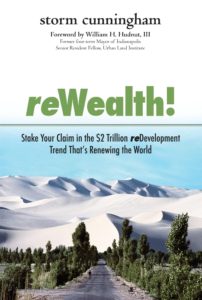 Whereas The Restoration Economy documented—and created an eight-sector taxonomy for—the broad variety of regenerative projects, Rewealth documented the best practices for turning those projects into the desired outcome of local revitalization: economic growth coupled with enhanced quality of life. You’ll find a brief overview of both books’ key concepts in Chapter 2.
Whereas The Restoration Economy documented—and created an eight-sector taxonomy for—the broad variety of regenerative projects, Rewealth documented the best practices for turning those projects into the desired outcome of local revitalization: economic growth coupled with enhanced quality of life. You’ll find a brief overview of both books’ key concepts in Chapter 2.
Here in RECONOMICS, I reveal the most important and useful insights I’ve gained in the 23 years I’ve spent researching, writing about and teaching this subject.
The title of this book derives from reconomics: a new framework and process for revitalizing economies and making them more resilient. Resilient prosperity, in other words. “Economies”, in this case, includes every scale: national, regional, community, organizational, and even personal.
Communities all around the planet are suffering from economic, social and/or environmental decline. Some due to technological shifts, and others to economic shifts. Some due to local disturbance like war, and others due to global factors like changing weather patterns and sea level rise. In other words, tens of thousands of communities need to produce some form of revitalization. And they don’t just want a brief burst of revitalization: they want resilience as well. The speed of their renewal cycle will be determined locally, depending on a combination of urgency of need, size of the community/region, and management capacity.
Adding a reliable, replicable process for community and regional improvement is the first truly fundamental change in local governance in decades. I specified “public” leaders above because successful corporate leaders are all about process. They know that production and process are virtually synonymous: one simply cannot get the former with the latter. It doesn’t matter whether they are producing vacuum cleaners or marmalade: without a process, there’s no production.
In retrospect, it seems I’ve always been process-oriented. Here’s a truly mundane example. When the personal computer industry was just getting started (yes: I’m that old), I was hired as Director of Marketing for a company selling hardware and software for auto body shops. Nationwide, they were in last place out of about a dozen competitors. Their major marketing mechanism was exhibiting at trade shows, where they tried to sell business owners a $20,000 system straight from their show booth, with little success.
I replaced that single-step sales pitch with a three-step sales process. I figured out what decision they could reasonably expect a person to make at each step. In the few minutes they had a prospect’s attention at the booth, I changed the sale of a $20,000 to getting the person to sign up for a group presentation at the conference. At the group presentation, the goal was to get them to sign up for an individual consultation at the conference. Only at the individual consultation did we try to sell the $20,000 system.
Each of those three steps had an extremely high success rate. Instead of selling the usual single sale at the conference, they sold over 40. They used this process at every trade show after that, and within two years they were the #1 firm in the industry. A year after that, the company was purchased by a Fortune 500 firm. The only thing that had changed was the addition of a simple process.
– Beverly Sills, American opera singer and opera manager.
In the two decades I’ve spent on regenerating places worldwide, I’ve seen many fail. I’ve seen many move towards an uncertain outcome. And I’ve seen many succeed. But what I’ve never seen is a properly-funded Director of Revitalization whose remit covered all necessary environments: natural, built and socioeconomic. In other words, the whole community or region.
It’s time to get serious about renewing our world. The destruction of our planet has been normalized: we’ve been programmed to expect it as the price of progress. We now need to normalize the recovery of our world. We—and our children—need to expect things to get better. Revitalization could be called “Place Medicine”; restoring wellness to communities, regions, and nations. But where are this medicine’s scientists, doctors and schools?
Many places try to revitalize. Few succeed. Few of the successes last. Resilient prosperity should thus be a primary goal of public management. An ongoing process of fixing the present and the future together is how places revitalize in a resilient manner. Few places aim for resilient prosperity, so devitalization is in the cards for most.
If resilient prosperity is what we want, government should focus on it. And the starting point has to be the revitalization process, along with the myriad “re” activities that comprise it: regeneration, redevelopment, brownfields remediation, historic restoration/reuse, infrastructure renewal, etc. Why? For the same reason that Willy Sutton robbed banks: that’s where the money is.
Of the three components of the adaptive renewal megatrend (which you’ll learn about in Chapter 1)—revitalization, resilience, and adaptive management—understanding the first, revitalization, is the most important. Resilience and adaptive management are of somewhat lesser importance for two reasons: 1) they are both relatively new to the public dialogue, so people are more open to learning about them (whereas most leaders erroneously assume they already understand revitalization); and 2) fewer resources are devoted to resilience and adaptive management in most cities and regions, so there’s not as much to work with.
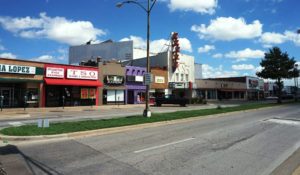
The downtown area of the Oak Cliff neighborhood in Dallas, Texas is trying to revitalize, despite being severed by a highway. Photo by Michael Barera via Wikimedia.
On the other hand, well over $3 trillion is already spent annually worldwide on urban revitalization and natural resource restoration. Integrating resilience and adaptive management with those existing budgets is thus the quickest way for them to get traction. There’s nothing forced about this 3-way wedding; they reinforce each other quite naturally. Together, they can solve both today’s persistent problems and tomorrow’s unknown—but potentially calamitous—problems.
If you ask a city council to define “revitalization”, how many different answers will you receive? Hint: take the number of council members, and divide by one. Contrary to current practice, revitalization shouldn’t just be a reaction to devitalization: it should be a constant process of breathing new life into a place, regardless of current condition.
In Vietnam, America won most battles, but lost the war. It’s similar in cities: many successful projects, but a failure to revitalize. Part of the problem is ignorance: few communities have anyone who understands the dynamics of revitalization well enough to create a strategy. The other problem is that—even with such a person—they don’t have a Revitalization (or Resilience) Director position in their governance structure. We’ll address this in more detail in the final chapter.
In Chapter 12, you’ll also discover a new, practical way for you to turn this knowledge into a career that helps revitalize your community, or helps regenerate our planet. A vitally-important new type of professional is emerging: the certified Revitalization & Resilience Facilitator. These folks put “RE” after their name, often in addition to certifications from related professions such as planning, architecture, economic development, project management, etc.
We’re capable of tapping deep wellsprings of strength, courage and creativity when family members are in danger. Our economic, ecological, and social future now depends on our extending such concern and compassion to our communities and planet. Our survival—or at least our quality of life—depend on it. Humans and wildlife worldwide are suffering as never before, and both are in greater peril than ever before.
What we destroy, destroys us. Since strategies are our path to success, they become our primary interface with our world, and thus determine in large part how the world responds to us. Thus, what we restore, restores us. What we revitalize, revitalizes us.
- INTRODUCTION - Why your next small renewal project could trigger massive ongoing revitalization.
- PART A - CONTEXT: The challenges of creating resilient prosperity and climate restoration.
It also leads to climate restoration. In my first book, The Restoration Economy, I pointed out that sustainable development is what we should have been doing since the Industrial Revolution started. But we didn’t, so our world is now so depleted, degraded, fragmented and polluted that only restorative development is capable of creating a healthier, wealthier future for all.
That same dynamic has been playing out as regards the global climate crisis. For the past two decades or so, the focus has mostly been on mitigating climate change and adapting to it. The latter is appropriate, since we might well fail to arrest the syndrome before it passes the tipping point (if it hasn’t already) and enters an unstoppable feedback loop.
But saving us from that fate won’t happen as the result of climate mitigation efforts: only climate restoration efforts can do that. Carbon negative, not low-carbon or carbon-neutral. By all means, continue any climate mitigation efforts that are working, but the path forward must be climate restoration.
The good news is that it’s doable, but not just by cleaning-up industry and switching to renewable energy. Those are essential, of course, but there’s a more-oblique path to climate restoration that has vast potential because it’s what everyone wants (even climate crisis deniers): resilient prosperity.
This book is about a path to creating resilient prosperity for communities, regions and nations that simultaneously:
- Grows their economy while boosting environmental health and quality of life;
- Adapts the place to the effects of the climate crisis to make them more resilient; and
- Helps restore the global climate as a side effect, because the regenerative process I describe here—when properly applied—automatically creates carbon-negative economic growth.
In other words, we can revitalize our way to climate restoration.
Every place needs revitalization. City leaders often say “oh, WE don’t need revitalization”, as if it’s something only poor, dirty, post-industrial places do. If I mention a struggling (often ethnic) neighborhood of their city, the reaction is often “well, of course THEY need revitalization.” Any community that thinks it doesn’t need to work on this is probably on its way down. We tend to lose what we take for granted.
They’re also wrong because revitalization isn’t just about the economy. Can any city say that their quality of life and environmental health can’t possibly be any better? Even if a place doesn’t have many assets (like vacant buildings) that need to be repurposed or renewed, their cit almost certainly needs to reconnection. Concentrated wealth and concentrated poverty fragment places, and disguises their overall decline. So, investing in the reconnection and revitalization of distressed neighborhoods is also an investment in social resilience.
Revitalization isn’t defined by current conditions: it’s defined by past conditions, trajectories and trendlines. It doesn’t have to start from a state of distress; just a lower level of whatever you want more of (or a higher level of what you want less of, such as pollution, crime, etc.) Revitalization is defined by the gap between a previous baseline condition—good or bad—and an improved present or future condition.
So revitalization isn’t just for post-industrial economies: it’s for post-bad-planning, post-austerity, post-excessive-economic growth, post-laissez-faire, and post-resting-on-laurels situations as well.
In these days of more and worse disasters fueled by the climate crisis, even places ruled by conservative politicians are realizing they need more resilience.
To avoid repeatedly saying “revitalization and resilience” as if they were separate, unrelated goals, let’s conflate those two universal desires into “resilient prosperity” for the rest of this book to keep things simple.
So, if resilient prosperity is what everyone wants, why do so few enjoy it? Why do so few public leaders know how to create it? That’s what this first section of the book is about.
- Chapter 1 - TRENDS & TERMINOLOGY: Civilization's shift from adaptive conquest to adaptive renewal.
In today’s increasingly broken, dialog-deprived, disaster-fatigued world, we often dive into remedies without understanding the problem, without really talking about the problem, and without even perceiving our level of ignorance. So let’s explore some of the underlying terms, trends and concepts before discussing solutions.
The Adaptive Renewal Megatrend
Once upon a time, we humans grew our economies—and accommodated growing populations—by sprawling, and by extracting irreplaceable virgin resources. In other words, we were adapting the planet to our needs, a mode I call adaptive conquest. In most cases, those adaptations were solely for our needs: wildlife be damned.
Many indigenous cultures had ways of limiting their population growth, and used resources in a more sustainable manner. But they usually went the way of wildlife (towards extinction) when the sprawl and extraction machine of adaptive conquest cultures discovered their lands.
That adaptive conquest model has had many unintended consequences—and it has obvious limits on a planet of finite size with a growing population—but it worked fine for about 12,000 years. This was the period that scientists refer to as the Holocene: the epoch during which human activity started to affect the planet.
 We’re now in the Anthropocene—which “officially” began in 1950—the epoch during which human activity dominates the planet’s life-supporting processes.
We’re now in the Anthropocene—which “officially” began in 1950—the epoch during which human activity dominates the planet’s life-supporting processes.
How can we survive and even thrive on our tiny planet, despite exploding populations in Africa, Latin America and most of the Muslim world? The only viable alternate mode is to base our economies on restoring our depleted natural resources (and climate), on remediating our vast inventory of contaminated land (and water), and on revitalizing and boosting the capacity of the cities we’ve already created. In other words, we must adapt to our adaptations, a mode I call adaptive renewal.
Economic growth based on adaptive conquest comes in a variety of flavors—capitalism, socialism, communism, etc.—but all are adaptive conquest nonetheless.
– Francis Bacon, British author and statesman.
In the Balearic archipelago of Spain is a paradise called Cabrera Island. It’s part of a sub-archipelago called Archipiélago de Cabrera, which has been a natural reserve since 1991. Here, wildlife flourishes, and human visitors bliss-out on beauty, surrounded by the Mediterranean’s turquoise waters. It wasn’t always so. Between 1973 to 1986, it was a base for the Spanish Armed Forces, although military usage actually goes back to 1916.
Between 1808 and 1814, Isla de Cabrera was a hellhole of suffering for humans and wildlife alike. 9000 of Napoleon’s soldiers were imprisoned there after their defeat in the Peninsular War (when the allied forces of Spain, the United Kingdom, and Portugal repelled Napoleon’s invasion of the Iberian Peninsula). Only 3600 made it out alive, due to starvation, disease, neglect, and abuse.
But the island’s history of adaptive reuse goes even further back. During the 13th and 14th Century, the island was a base of pirate operations, due to its well-concealed harbor. That ended when Cabrera’s castle was built, with its cannons guarding the entrance to the harbor.
Pirate base. Death camp. Armed garrison. Nature reserve. The way humans have constantly adapted the island to their changing needs serves as a microcosmic metaphor for our entire history—and future—on this planet. With the rise of the adaptive renewal megatrend, there’s hope that the entire planet can follow a similar trajectory…similarly ending in paradise. But first we need to know how to manage adaptively—and how to institutionalize the practice—because it’s a very different animal from the old plan-execute-plan-execute model.
– Marc Chagall, Russian-French artist.
The global adaptive renewal megatrend has arisen from the convergence of three trends, each of which is huge and of vital importance in its own right: regeneration (of natural, built and socioeconomic assets); resilience (physical, economic and social); and adaptive management (which boosts the success of regeneration and resilience efforts by combining learning with action).
Revitalization makes poor places wealthier. It makes wealthy places healthier. It makes healthy, wealthy places healthier, wealthier, and happier. Combining revitalization with resilience makes the good times last. Managing revitalization and resilience efforts in an adaptive manner enables us to take action before we fully understand the problem, and keeps our remedies responsive to new knowledge, challenges and opportunities.
You can recognize the adaptive renewal megatrend at work in places that are constantly repurposing, renewing and reconnecting their natural, built, and socioeconomic environments in an integrated manner, that are monitoring their results and that are improving their methods as they go along.
Resilience efforts are mostly long-term, with few short-term benefits. That makes them a hard sell to both politicians and citizens, and thus difficult to fund. Revitalization, on the other hand, is an easy sell. It’s been the most common political promise for millennia. Combining the two is thus logical. But both revitalization and resilience efforts usually have the same problem: lack of adaptive management.
Adaptive Management
– General Charles de Gaulle, President of France (1958 – 1969)
Under today’s incessant bombardment of change, plans tend to produce great stress for those charged with writing or executing them. Each day, the assumptions on which the plans are based diverge further from reality, yet professional managers are usually required to “stick to the plan”. Adaptive management is a healthy recent trend that allows places and organizations to implement and evolve plans simultaneously. Such a plan is sometimes called a “living document”.
Adaptive management is formally defined as “a structured, iterative process of robust decision making in the face of uncertainty, with an aim to reducing uncertainty over time via system monitoring.” My informal definition is “a flexible management style that learns from—and quickly responds to—reality.”
There are six key steps in adaptive management: 1) assess the problem; 2) design the solution; 3) implement the solution; 4) monitor the results; 5) evaluate the results; 6) adjust the solution. For practical purposes, I normally condense them into three pairs of related steps: 1) assess/design; 2) implement/monitor; 3) evaluate/adjust.
Adaptive management is a global trend in natural resource management that has yet to be widely adopted in urban applications. This is because natural resource managers and restoration ecologists are very aware of the deficiencies in their knowledge. As a result, they wisely developed adaptive management, in which plans are just starting points.
The business world is also catching on. Entrepreneurship professor Steve Blank (UC Berkeley) captured the spirit of adaptive management when he defined a startup as a “temporary organization searching for a repeatable business model.”
Adaptive management arose primarily from two relatively recent realms of scientific research: 1) restoration ecology (the corresponding practice of which is known as ecological restoration), and 2) complexity science (the study of how complex adaptive systems arise, grow, die and are reborn.
 Many insights—both useful and profound—have derived from complexity science, and you use technologies every day that are based on those insights.
Many insights—both useful and profound—have derived from complexity science, and you use technologies every day that are based on those insights.
Here are two of those insights that apply directly to the process of bringing places back to life: (1) Qualitatively new behaviors tend to emerge in dissipative (complex) systems that are out of equilibrium; and (2) Healthy complex systems tend to lie at the border of phase transitions and bifurcation points. The bottom line? Managing change effectively requires a tremendously open and adaptive mindset…one that doesn’t panic when surrounded by uncertainty…one that welcomes and embraces surprise.
I was one of the first 250 members of the Society for Ecological Restoration, and was peripherally involved with the Santa Fe Institute, where I met complexity economist W. Brian Arthur in the late 90’s. I’ve thus been privileged to witness the evolution of both of those new disciplines, and how they have benefited our lives.
Adaptive management arose because the rise of ecological restoration quickly revealed our vast ignorance as to how ecosystems form, how they build and maintain resilience, how they collapse and how they recover.
For centuries, we’ve deluded ourselves into thinking we understood nature, so we simply threw fences around large wildlands, assumed we had conserved them, and developed all around them. In many—maybe most—cases, such “protection” contributed to their devitalization. This was not a learning-intensive process.
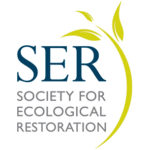 Few activities reveal our lack of understanding of natural processes faster than the process of trying to recreate a damaged or destroyed ecosystem. The science of restoration ecology has probably revealed more useful insights into the dynamics of natural systems in the past two decades than we learned in the previous two millennia.
Few activities reveal our lack of understanding of natural processes faster than the process of trying to recreate a damaged or destroyed ecosystem. The science of restoration ecology has probably revealed more useful insights into the dynamics of natural systems in the past two decades than we learned in the previous two millennia.
So, our search for better ways of managing urban revitalization—and the discovery of underlying principles, taxonomies, and frameworks—started with those scientists who bring complex systems back to life for a living: restoration ecologists. Scientists experiment on revitalizing ecosystems in ways that can’t be done on human communities. This can lead to useful insights and metaphors for thinking about cities. One of the most important lessons emerging from the restoration of natural systems is the need for adaptive management.
Urban managers seem to be less aware of their ignorance than ecosystem managers, so comprehensive plans adopted by cities are expected to function unchanged for 5, 10, or even 15 years. But few such plans are ever implemented, and few that are implemented succeed to any significant degree. One thing that’s common to both the failures and the successes is a paucity of monitoring: the process is seldom measured in any rigorous manner, so whatever lessons we learn are usually anecdotal.
Urban leaders seeking socioeconomic revitalization have much to learn from restoration ecology. The results of both their tactics and their strategies are monitored scientifically, and the lessons published in scientific journals such as Restoration Ecology, and in practitioner journals such as Ecological Restoration.
The starting point for this transition to adaptive management in urban environments will likely begin where the city and nature meet.
Here’s a quote from the 2013 Healthy Waterways Strategy report from Melbourne, Queensland, Australia: “Melbourne Water uses adaptive management to ensure that decision making is based on sound and current knowledge. This increases our ability to carry out activities that will result in the greatest gains for waterway health. Adaptive management relies on focused monitoring, investigations and research to build our knowledge of waterways and understand changing environmental conditions, outcomes of management approaches and the effect of external drivers such as climate change. We evaluate these programs to inform our planning and implementation and report outcomes to ensure knowledge is shared.”
New York City’s PlaNYC 2030 plan for adapting to climate change—while accommodating 9 million new residents—is well-designed (the jury is still out on whether it’s well-implemented) because it focuses on three key areas: 1) infrastructure renewal (especially green infrastructure); 2) retrofitting existing buildings; and 3) updating old building codes to current needs. Adapting the natural, built, socioeconomic, and policy/regulatory environments together is where the real magic will be found.
The best plans are not only adaptive, but are based on adapting (repurposing, renewing and/or reconnecting) existing assets. How did Chicago adapt its planning to fix its urban heat island problem, which killed 750 people in 1995? By repurposing roofs. Unlike in many traditional cultures—with their sod, moss or even crop-covered roofs—“modern” roofs are single-purpose: shield occupants from weather. But that design actually changes the local weather. With extremely hot days on the increase (July 2019 was officially the hottest month in recorded history), Chicago has transformed 4 million square feet of roofs into “green roofs”. Besides cooling the city, they:
- reduce flooding from storms;
- help restore Lake Michigan by reducing combined sewer overflow; and
- help restore the climate by absorbing carbon.
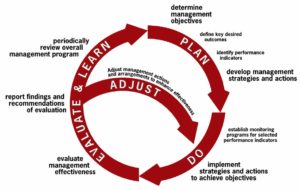
Image credit: Worboys, Lockwood, De Lacy: Protected Area Management, Principles & Practice, 2nd Edition, Oxford University Press
Buildings and businesses aren’t the only things that can outlive their form and function. Unchanging building codes, zoning, development incentives, and most other aspects of governance almost inevitably shift from contributing to community progress to retarding it. Keep your policies—not just your plans—adaptive, if you wish to improve your community’s resilience.
But having adaptive policies is one thing. Having the courage to change them when you’re making a lot of money from current bad policies is another. Bad policies can be incredibly destructive, especially those based in the Holocene’s ancient sprawl-based model. When I was doing some work in Belize back in the 80s, a local environmentalist was bemoaning the fact that the only way he could take ownership of the land he loved was by destroying it. The country’s policy then (hopefully no longer) was that any citizen was entitled to land free of charge, provided they clear it first. This “destroy it and it’s yours” policy resulted in widespread devastation of a place whose economy is strongly tourism-based. And most of those tourists come to see nature.
Throughout the 20th century, water engineers seemed to be on a quest to pollute the maximum amount of clean water with any given amount of raw sewage or industrial discharge.
They were driven by a poetic-but-brainless maxim: “the solution to pollution is dilution.” But diluting 1 gallon of sewage with 100 gallons of clean water simply yields 101 gallons of polluted water. Diluting 1 gallon of sewage with 100,000 gallons of clean water yields 100,001 gallons of polluted water.
Combined sewer and stormwater systems made sense a century ago, when urban populations were relatively small, sewage treatment technologies were not in wide use, and cities still had significant amounts of permeable surfaces to absorb rainwater.
Flushing sewers with stormwater could be forgiven then, but what shouldn’t be forgiven is how long it took communities to stop specifying them, and how long it took civil engineers to stop recommending them…decades after combined sewer overflows (CSO) were recognized as a crisis.
The need for adaptive management isn’t the only lesson in managing urban areas that we can derive from the science of restoring ecosystems, of course. Three examples of other potential crossover lessons:
- Restoration ecologists speak of “reparative restoration” (fixing damage, such as by reintroducing native species) versus “replacement restoration” (providing functional equivalents, such as hunters replacing wolves as top predators).
- Lesson: Cities suffering industrial flight to lower-wage countries could choose between recruiting functionally equivalent employers versus restoring jobs by “repurposing” citizens via education, training, and entrepreneurial support.
- Restoration ecologists can’t restore nature 100%, so they aim for resilience. They use “foundational” species—such as corals, seagrasses, and oysters—that form the structural basis of ecosystems and contribute most to community stability. Nature then takes over, repairing itself and diversifying without further intervention.
- Lesson: With limited funding, public leaders must focus on reaching the revitalization tipping point, where the free market takes over. This often involves renewing foundational assets; infrastructure, water, heritage, public services, etc.
- Here’s a quote from the paper “The Rapid Riparian Revegetation (R3) Approach” in Ecological Restoration (June 2014): “With hundreds of thousands of kilometers of riparian corridors in need of restoration, and limited public funds for implementation, practitioners need to identify strategies that lower the unit cost and accelerate the pace of reestablishment of native riparian forests in sustainable ways. The R3 approach is grounded in ecological principles and geared towards producing outcomes consistent with restoration programming and the human desire to see “progress” for the investments made.”
- Lesson: Replace “riparian corridors” with “cities”, have R3 stand for “rapid resilient renewal”, and this passage describes good urban strategies.
The constant arrival and territorial expansion of invasive species is just one of myriad factors creating a need for adaptive management of landscapes. In the U.S. alone, there are over 5000 invasive plant and animal species. A very conservative estimate by the U.S. Fish and Wildlife Service puts their annual national economic damage at about $120 billion.
Those charged with managing the problem have to juggle removing well-established invasive species, reducing the introduction of new invasive species, and reestablishing native species…all while the climate is changing and human activities are altering the air, soil and water. Creating an effective, static long-term plan for such a mission under such circumstances is quite literally impossible. The only static situations are those devoid of life. Strategies and tactics must adapt not only to the changing situation, but to the changes they themselves cause, resulting in a constant—and often accelerating—loop of cause and effect, feedback and evolution.
it’s about learning to dance in the rain.”
– Vivian Greene
This ignorance of complex adaptive systems dynamics is rife among managers of systems other than nature, such as human societies and economies. As a result, adaptive management is appearing everywhere, though often not by that name. Business people, for instance, have probably encountered the Minimum Viable Product strategy used by many technology start-ups. That’s an example of adaptive management.
The “adaptive” in adaptive renewal might best be defined in terms of flow. Want a specific example of using adaptive management to revitalize a downtown? Look at parking policies and traffic flow.
Some say free or cheap parking causes traffic jams and undermines efforts to improve public transit. Others say traffic jams are a good problem to have: the goal is more shoppers, so the more free parking, the better. Still others say expensive parking is best: it encourages pedestrian-friendly, transit-oriented development, and the increased revenue funds downtown improvements. Who’s right? All of them are.
Downtowns evolve and devolve like all living systems, so parking policies must adapt to current problems, needs and goals. If a downtown has a dearth of retail, then scaring people away with expensive, strongly-enforced parking isn’t a good idea. It only takes one downtown parking ticket to convince a shopper that the sprawl mall is the better place to go. In that case, a switch to free parking might stimulate more visitors. This will encourage more retailers, which will stimulate more visitors, and so on in a positive feedback loop of revitalization.
But if that loop continues long enough, it will eventually result in traffic jams. That will make the downtown noisy, polluted, and dangerous for pedestrians, and they’ll start coming less often. Parking fees can then be reintroduced, starting with cheap parking. If that doesn’t bring traffic down to levels that restore the quality of downtown life, they can be hiked again, until the right balance is achieved.
But then someone is bound to say “Ah: we’ve found the right balance. Let’s engrave this parking price in stone.” Now they’re heading for trouble again, because, again, cities are complex, living systems, and healthy systems never stay the same.
Parking policies are deceptively simple, but they are just one of myriad factors affecting the health and survival of your community that can be managed via policies. So, parking is a good place to start your journey into adaptive public management. Taking an adaptive approach to policymaking is a core element of resilience planning, but it’s rarely practiced. I’ve seen many recent resilience plans for cities: few even mention adaptive management, much less were based on it.
When Manhattan’s Times Square was pedestrianized, cars were completely banned. The rate of visitors quadrupled (delighting the merchants) and the crime rate dropped by half. So to many cars degrade a city center, as can a paucity of cars. The “right” number can revitalize it, and that number might be zero.
What revitalizes a dying place might devitalize a vibrant place. And what revitalizes a place now can kill the same place later. Such complexities are anathema to most public leaders, who like simple, easy “solutions.” Adaptive management is a lot easier to write about than it is to practice, but fear not: technology is coming to the rescue.
We now have systems enabling real-time adaptability, as with demand-price parking meters, similar to Uber’s surge pricing. So, revisions to parking policies might not be needed as frequently as before, as algorithms take over. Maybe we will one day have an Internet of Renewal (IoR) to go along with our Internet of Things (IoT): verb-based, rather than noun-based software.
Here’s a recent example of this adaptive traffic flow dynamic at work. In April 2018, Buffalo, New York was on the verge of wasting a hoped-for TIGER Grant. This was a vestige of the late-and-lamented Transportation Investment Generating Economic Recovery program that helped revitalize many cities during the Obama administration, and which has been reincarnated by the Trump administration in a lobotomized form (it ignores most of what we’ve learned about cities in the past 30 years) rebranded as BUILD Grants.
Over 30 years ago, Buffalo city leaders were ahead of their time in banning cars from their Main Street. This greatly improved the quality of life downtown, but the desired economic revitalization never manifested.
The problem is that they never followed-through on the logical next step after eliminating the traffic problem: taking advantage of that increased quality of life to add what the downtown (and its businesses) desperately needed: more residents. One would think that the relationship of housing to residents to customers would be fairly easy to perceive. Not so at that time in Buffalo, apparently.
How did they plan to revitalize Main Street? By spending that precious TIGER Grant on restoring automobile traffic! Cars don’t buy goods. Pedestrians do. This is the kind of wasteful, self-destructive decision that cities make when they don’t think strategically. A good strategy affects the underlying cause to create the desired effect.
Adaptive management is the key to dealing with evolving challenges and evolving tools (like surge pricing and smart meters) in an evolving environment that we are changing as a result of our adaptive management…and doing so when we don’t fully understand the dynamics of the system we wish to revitalize.
Pittsburgh’s Mayor Bill Peduto is one public leader who “gets it”: he’s taking an adaptive management approach to the city’s multi-decade, multi-river restoration challenge. Other city, county, state, national and multinational leaders are now doing likewise, as we’ll see in a moment.
With all this constant, self-referential adaptation, we need to be especially careful that we don’t lose sight of our goal. Any changes made to strategies, plans, and projects should reference the vision, to prevent “mission drift”. As Steven Covey says, “The main thing is to keep the main thing the main thing.” That’s the importance of basing your resilient prosperity efforts on a shared vision, as we’ll describe later.
Oscar Wilde described the importance of having an inspiring vision when he said “We are all in the gutter, but some of us are looking at the stars.” The function of a clear vision is to keep an iterative (adaptive) strategy or iterative plan from iterating itself into a hole.
– Mike Tyson
There are several ways of interpreting Mike Tyson’s well-known above quote. It might mean that most people panic in the face of adversity, and lose track of their purpose. It might mean that having a plan is useless. Or, it might mean that having a fixed plan is useless: when it’s reality that’s punching us in the mouth, the plan must be adapted to reality. But in the rapidly-changing circumstances of a boxing match, it wouldn’t a plan that’s being adapted: it would be the strategy. (Referees frown on fighters consulting documents while they’re in the ring.)
Large institutions seldom announce that they are switching from a “follow the plan at all costs” approach to an adaptive management approach.
This is partly because once it’s understood, it makes their previous leadership look less than brilliant, and some of those previous leaders might now be on the board. But it’s mainly because the process of adopting an adaptive approach should itself be adaptive. (Say that three times rapidly!)
For instance, the United States Agency for International Development (USAID) is the federal agency responsible for administering civilian (i.e. non-defense-related) foreign aid. USAID’s annual budget is about $36 billion.
USAID has recently been embedding adaptive management into its funding mechanisms, but you’d hardly know it if you weren’t directly involved in the process. They refer to it as the CLA Framework (Collaborating, Learning, Adapting).
In their new Program Cycle Operational Policy, they state that one of the three key requirements of funding applications from their international partners is “Learning from performance monitoring, evaluations, and other relevant sources of information to make course corrections as needed and inform future programming.”
For those involved in modern disaster-response and/or climate crisis adaptation initiatives, no such cultural change is needed: any true professional working in those areas knows that adaptive management is not optional.
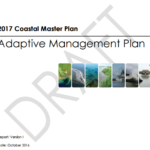 A recent example of this can be found in the draft Adaptive Management Plan, published in October of 2016 by Louisiana’s Coastal Protection and Restoration Authority.
A recent example of this can be found in the draft Adaptive Management Plan, published in October of 2016 by Louisiana’s Coastal Protection and Restoration Authority.
The switch to adaptive management need not be disruptive. After all, all one is really doing is injecting common sense into the previously rigid, blind-faith-in-the-plan culture. Or, as Divyesh Mistry of the Toronto Transit Commission says: “Cities change. Get over it.”
Due to the rapid rise in vacant commercial properties—malls, big box stores, office buildings, etc.—some architects are finally starting to think about designing buildings in a way that facilitates eventual adaptive reuse.
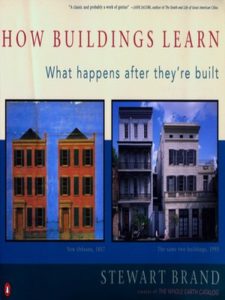 The architecture firm Gensler invented the term “hackable” buildings back in 2014 to capture the idea. They feel we should be constructing—and renovating—in a way that accommodates the desired immediate use, but that responds to changing market demands or preferences by making it easy for the structure to be reworked for a productive new life. It’s basically a proactive approach to the concepts Stewart Brand laid out in the classic book, “How Buildings Learn.”
The architecture firm Gensler invented the term “hackable” buildings back in 2014 to capture the idea. They feel we should be constructing—and renovating—in a way that accommodates the desired immediate use, but that responds to changing market demands or preferences by making it easy for the structure to be reworked for a productive new life. It’s basically a proactive approach to the concepts Stewart Brand laid out in the classic book, “How Buildings Learn.”
In today’s climate of constant crisis and heightened uncertainty, planning for success means assuming the plan will probably fail, but not the project or program. Projects, plans, and programs for improving our built, natural, socioeconomic, and geopolitical environments must adapt not just to rapid change, but to an accelerating rate of change in each of these intrinsically-connected arenas.
Such conditions are highly corrosive to 5-year plans, which now decompose and putrefy at an accelerated rate. Longer-term plans are best suited to fundraising pitches, political posturing, and other fiction-rich endeavors. That said, the process of planning is often of great value, even when the relevance of the resulting plan is decaying even while it’s still being written. An evolutionary ethos is the key to success in such an environment.
– Bruce Lee (on creating a new style of martial art).
The only preservative we can add to our rust-prone plans is adaptability. Once implementation begins, we must be ready to defenestrate our highly-perishable plans at a moment’s notice, lest they become toxic to our future. These days, only our shared visions of our desired future should be long-term, not the strategies, policies or plans we devise for achieving them. Adaptive management provides the flexibility (and reflects the humility) needed to deal with today’s social, economic, political, and environmental precariousness.
While some manifestations of the adaptive renewal megatrend are well-established, many others are more recent or are still emerging. The latter include adaptive strategies related to climate change, sea level rise, and natural disasters, such as for cities, agriculture, and natural resources (including the creation of novel ecosystems).
Experts sometimes refer to “passive” vs. “active” adaptive management. Passive adaptive management is normal planning plus the monitoring and evaluation of results. Common sense, in other words. The passive form was invented to allow traditional managers to say they use adaptive management when they don’t have the courage for it. The active form is what we’ve been discussing here.
Surprise!
As mentioned earlier, one characteristic that defines all living systems is the capacity to surprise. Adaptive management could thus be called “surprise management”. It’s the polar opposite of the engineering-based approach that dominates public management today.
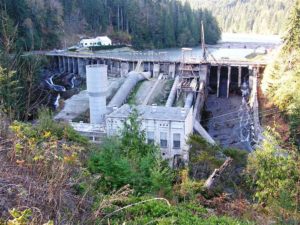
Elwha Dam in 2005. Built in 1913, demolished in 2012. The Elwha River and its salmon runs have spectacularly come back to life. Photo: Larry Ward, Lower Elwha Fisheries Office.
In addition to maximizing efficiency, the primary purpose of an engineer is to eliminate surprises. This is wonderful skill when dealing with structures: no one likes driving over a bridge that behaves in an unpredictable manner. But it’s a disaster when dealing with ecosystems or cities. Removing surprises from a living system is synonymous with killing it.
But even their efficiency goal can be problematic. Again: it’s desirable for mechanical and structural engineering work, but is often inappropriate when applied by civil engineers working on complex systems. Nature does many things that are inefficient in the microcosm, but highly efficient in the macrocosm. Plants create thousands of seeds—and fish lay thousands of eggs—since maybe 1/10th of 1% will reach reproductive age. The rest become food for other species. Forest fires are another example of (apparent) waste, and we’ve now seen the vast damage done to our ecosystems (and towns) when we try to engineer fires out of existence.
These are two of the major reasons the U.S. Army Corps of Engineers—in controlling the life out of our estuaries and waterways—has done more economic damage to America than all foreign armies combined. It’s also why China might eventually be headed towards another national meltdown: they have far more engineers in local and national government than any other country.
Manhattan’s magnificent High Line Park (which we’ll return to later) is emblematic of the adaptive renewal megatrend. It created jobs, boosted real estate values, and increased quality of life. It revitalized, in other words. The High Line was initially a bottom-up flow, a resident-led effort that led to a top-down flow of support by the city. It accomplished all of this through reuse of existing assets (an elevated railroad track), which reconnected neighborhoods and reestablished flows. These are the trends and models you’ll see throughout this book.
Single-use places are a form of disconnection and isolation, whether urban or agricultural. Civil engineering has traditionally been oriented toward isolating functions, separating asset types and preventing flows. So, it’s not just that adaptive conquest must shift to adaptive renewal: the nature of our adaptations must shift from our traditional mode of fragmenting systems, blocking flows and eradicating surprises to a mode of reconnecting systems, restoring flows and encouraging surprises.
Terminology and Concepts
What we’re doing is protecting against future damage, but there’s not a new positive cash flow.
You’re not creating new value. You’re protecting against the loss of existing value.”
– David Levy, management professor at the University of Massachusetts – Boston.
Revitalization is the process of regaining lost vitality.
Resilience is the process of retaining vitality.
Resilient prosperity is the process of regaining and retaining vitality.
Terminology is important, and becomes even more important when huge sums of money—and the future of communities—are involved. In the 50s and 60s, the U.S. federal government offered cities hundreds of millions of dollars to revitalize any area they labeled “blighted.” White politicians and urban planners usually decided that the word meant any place with large numbers of darker-skinned, lower-income people and/or immigrants. Hundreds of vibrant neighborhoods were demolished as a result, all in the name of “urban renewal.” A more-rigorous definition of blight embedded in policy might have prevented a lot of unnecessary suffering.
While most articles about the horrors of urban renewal focus (rightly) on the human cost, it should be noted that vast numbers of manufacturers and retail businesses fled the downtowns for the suburbs while all of the physical devastation was taking place. This was an example of destructive federal policymaking: the catalytic funding initially came from the Housing Act of 1949, and was accelerated by the National Interstate Defense and Highways Act of 1956. It was called “urban renewal”, but it was just demolition and new infrastructure. A more-rigorous definition of revitalization might have prevented a lot of unnecessary devitalization.
My current working definition of revitalization: “Revitalization is a cycle of rising optimism, equitable prosperity, quality of life, and environmental health—usually triggered by renewing, reconnecting, and/ or repurposing distressed natural, built, socioeconomic, and human assets—and often preceded by a cycle of devitalization.”
The 2008 movie, Slum Dog Millionaire was praised outside India, but largely reviled within India. Why? Because it perpetuated the faulty perceptions of slum life that help Westerners feel superior. It ignored the positive aspects of slum communities, which can often make American suburbs look dysfunctional—even sociopathic—by comparison. These days, many socially-rich slums are being bulldozed In India, to be replaced with the isolated, anonymous life of apartment and condo towers.
In his December 19, 2014 article in Global Site Plans, “Why Some Mumbai, India Slum Dwellers Prefer Slums to Condos”, writer Adwitya Das Gupta quoted his slum-dwelling maid as “If I am late from work, my neighbours bring my children dinner and make sure they are taken care of without me needing to ask… I have friends there and people I can rely on. Why would I want to move? I think the communities we have there are much stronger than you would even have here.”
Maybe we need to redefine “slum”. Those examples are just a tiny sampling of the suffering that can arise from imprecise terminology. Sometimes, a perfectly good word takes on a negative meaning as a result of bad practices. In Milton Keynes, England several public housing projects are being demolished and replaced with better housing. But it’s apparently being done in a way that results in unnecessarily-high levels of displacement and social trauma.
A February 28, 2019 article in the Milton Keynes Citizen reported that Former Milton Keynes Council leader Kevin Wilson said “I want the word regeneration replaced with something more community-inclusive. The word ‘regeneration’ has become synonymous with the word ‘demolition’. The moment that you raise the spectre of ‘regeneration’, residents think that you are hiding something. The word itself has become toxic.”
In February of 2019, the Colorado Springs City Council was asked to declare 40 acres of virgin greenfields in the foothills to be an “urban renewal” zone. Some city leaders wanted to boost their tourism revenue by letting the U.S. Air Force Academy build a new 57-acre visitors’ center in this sprawl area.
The visitors center may or may not be a good idea, but calling it “urban renewal” is most definitely a bad idea. Doing so will undermine the city’s credibility in any future attempts to attract state or federal revitalization funding. This behavior certainly isn’t limited to Colorado: any time national governments create a pot of money with a given label, local politicians will call their project whatever’s necessary to get their hands on it.
That abuse of terminology in the scramble for money isn’t always totally misguided. In Michigan, for instance, any vacant property (usually residential) that’s accepted into a local land bank’s inventory is automatically designated a brownfield, whether or not there’s any suspected or actual contamination. This gives the land bank access to state brownfields funding.
That’s terminological misuse in a good cause, but it could undermine “real” brownfields reuse efforts. On the other hand, every plot of land on the planet is contaminated by something—old lead-based paint, oil leaks from vehicles, brake pad dust, etc.—so it’s a relative term. Most homes and lawns in the U.S. could be considered brownfields, given the heavy applications of toxins to kill weeds, mosquitoes, termites, fleas, rats, etc.
And so it is with resilience, where terminological fuzziness abounds. Part of the problem is that people often say they seek community resilience without specifying the type of resilience: social, natural disaster, climate, economic, etc. Or, they aren’t aware that all of those types of resilience must be addressed to create real community resilience.
As a community revitalizes, it increases its capacity of reaping the resilience dividend.”
– Dr. Judith Rodin, former President of The Rockefeller Foundation (2014)
If you’re new to the study of resilience, let me explain the “bouncing forward” reference in Dr. Rodin’s above quote about revitalization and resilience. Traditionally, cities hit by catastrophe (whether sudden and natural, or gradual and socioeconomic) have rather mindlessly gone about rebuilding in a way that merely reconstructed what had been lost. Their goal was to “bounce back.”
If resilience is your goal, you want to “bounce forward”…rebuilding better than you were before, in a way that makes you less vulnerable to future disasters. One might call this “preemptive planning”. Leadership of ANY kind can be actually defined as “acting before one has to,” which fits a resilience agenda perfectly.
I described this concept in my 2002 book, The Restoration Economy, showing how Lisbon, Portugal rebuilt the entire city on higher ground after a massive earthquake and tsunami in 1755.
They were also smart enough to take advantage of the opportunity to correct a number of urban planning mistakes (actually, lack of planning). That redesign was led by the Marquês de Pombal, who is sometimes called the world’s first urban planner. He was probably Robert Moses’ inspiration, as his style of planning has been called “despotic.” Nonetheless, the present-day result is one of the world’s most beautiful cities.
“Bouncing forward” is, in fact, a pretty good example of a strategy: it’s succinct, memorable, an effective guide in decision-making, and reliably successful when well-implemented in the right place at the right time. Unfortunately, government bureaucracies are often stuck in “bounce-back” mode, as FEMA has often demonstrated. Even worse are maladaptive recovery efforts that actually compound problems (usually due to short-term, palliative thinking and/or budget constraints from tax cuts).
– Chelsea Clinton, Vice Chair of the Clinton Foundation
Again: resilience is revitalization plus adaptability. Revitalization makes poor (or damaged) places wealthier, and wealthy places healthier. It makes healthy, wealthy places healthier, wealthier, and happier. Adaptability helps make the good times last. Resilient prosperity, in other words.
We should keep in mind that health and wealth (both in their holistic senses) are emergent qualities of doing the right things in the right way for the right amount of time. So, they should not be goals in themselves. Their nature is too ephemeral, and their emergence is too unpredictable to serve as deliverables. As Eleanor Roosevelt wisely said of another ephemeral goal: “Happiness is not a goal…it’s a by-product.”
Most folks define resilience along the lines of “the ability to bounce back from adversity or trauma, or adjust to change”. Traditionally applied primarily to materials and individuals, it has now become a goal of institutions and communities (as well as restored ecosystems). [Note: I use “resilience” in this book, rather than “resiliency.” Their meanings are identical, and both are real words. But “resiliency” is mostly used in casual American conversation. This guide uses the shorter, more elegant form preferred by scientists and educators, and by most English-speakers worldwide.]
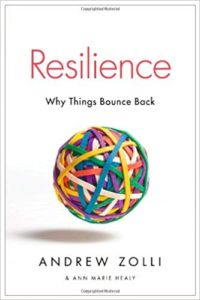 A systems-oriented definition of resilience is: “the capacity of a system to absorb disturbance and re-organize while undergoing change so as to still retain essentially the same function, structure, identity, and feedbacks.”
A systems-oriented definition of resilience is: “the capacity of a system to absorb disturbance and re-organize while undergoing change so as to still retain essentially the same function, structure, identity, and feedbacks.”
In their 2012 book Resilience: Why Things Bounce Back, authors Zolli and Healy offer an institutionally-oriented definition: “the capacity of a system, enterprise, or a person to maintain its core purpose and integrity in the face of dramatically changed circumstances.”
Resilient solutions are normally 1) redundant (to endure loss or damage); 2) flexible/scalable (to endure growth, contraction, and change); and 3) integrative/strategic (to endure time and heal fragmentation).
The desire for revitalization can be triggered by a long, slow decline, a sudden disaster, or simply dissatisfaction with the current quality of life. The desire for resilience is often triggered by recent or impending disaster: a fishery on the edge of collapse, a fragile economy, climate-related agricultural challenges, etc. So, revitalization is motivated by present-day pain, whereas resilience is motivated by a desire to avoid future pain. The two goals have obvious overlaps.
 This book is not about resilience in the traditional sense. There are many excellent books on that subject. One of the more recent is The Resilience Dividend, by the Rockefeller Foundation’s former CEO, Dr. Judith Rodin, published in November of 2014. Her 384-page work on resilience was especially insightful because it included a chapter on revitalization.
This book is not about resilience in the traditional sense. There are many excellent books on that subject. One of the more recent is The Resilience Dividend, by the Rockefeller Foundation’s former CEO, Dr. Judith Rodin, published in November of 2014. Her 384-page work on resilience was especially insightful because it included a chapter on revitalization.
This book, RECONOMICS, has the opposite emphasis: it focuses more heavily on revitalization, and its role in resilience. That’s because resilience is the poorly-funded newcomer, whereas revitalization, regeneration, and redevelopment agencies and budgets have been around for decades, if not centuries. Refocusing these established community and regional assets on resilient prosperity is thus the low-hanging fruit. An obvious and frequent connection between resilience and regeneration is in post-disaster situations.
This book thus comes at resilience from an oblique angle. Rather than focusing on traditional resilience strategies, it shows how the parallel trends/activities of community revitalization and natural resource restoration are ideal paths to a resilience effort. This is as opposed to launching yet another silo, this one called “resilience.”
As Zolli and Healy state in their book, “preserving adaptive capacity—the ability to adapt to changed circumstances while fulfilling one’s core purpose—[is] an essential skill in an age of unforeseeable disruption and volatility.” This is where most resilience efforts falter. They know that one of the most important principles of resilience is flexibility, yet they try to use their old, inflexible planning and management systems to implement it. It’s like removing tumors with a shotgun: simply not the right tool.
A related area in which resilience efforts get into trouble is in making safety their primary (or even sole) goal. Safety sounds like a reasonable objective, but it can become a rigid, fear-based ethos, preventing us from taking the risks needed to innovate and become more flexible and, ironically, safer. There is no safety: there is only safer. In excessive fear lies vulnerability.
As Will Rogers said, “You’ve got to go out on a limb sometimes, because that’s where the fruit is.” He also said “A vision, without a plan, is just a hallucination.” But this was said back in the days before planning became a formal discipline and industry, and before plans became a product and a formality…an end unto themselves.
Redundant, flexible/scalable, and integrative/strategic are the key (not only) factors in creating resilience. But again: resilience by itself won’t produce prosperity: revitalization does that. Resilience makes revitalization durable, and adaptive management keeps it relevant via flexible implementation.
Together, these three trends form the conceptual basis of a path to resilient prosperity. This book will turn those broad concepts into a specific process you can put to use immediately in your community or organization. Adaptive management constantly reorients actions towards what actually works. It’s the key to making resilience initiatives resilient (many aren’t, as we saw with the failed 100 Resilient Cities program).
 Resilience and adaptation most often converge when places prepare for climate change-related sea level rise and storms. Not surprisingly, Florida has a great deal of activity in this regard. Their Department of Economic Opportunity (DEO) offers many web resources on community resilience and adaptation planning.
Resilience and adaptation most often converge when places prepare for climate change-related sea level rise and storms. Not surprisingly, Florida has a great deal of activity in this regard. Their Department of Economic Opportunity (DEO) offers many web resources on community resilience and adaptation planning.
It describes three basic strategies for coastal communities in response to sea level rise: protection (armoring the shore with hard and/or green infrastructure), accommodation (elevating structures to minimize flood damage), and retreat (turning at-risk areas into parks, and moving structures to safer locations). They list dozens of potential funding sources for such projects.
In 2012, the Florida DEO launched a 5-year project called “Community Resiliency Initiative: Planning for Adaptation.” It integrated adaptation to potential sea level rise into all three local planning mechanisms: the comprehensive plan, the hazard mitigation plan, and the post-disaster redevelopment plan.
– Ursula Le Guin, American writer
But adaptation efforts are not the same as adaptive management. While shared visions and goals can enhance success, adaptive management helps ensure progress even in their absence, and even when the goals turn out to be faulty. Adaptive management is thus more focused on the journey of renewal, rather than the destination.
A good revitalization strategy will, of course, adapt to the challenges of a changing climate. That requires stronger, not weaker, environmental regulations. Likewise, a good climate resilience strategy will adapt to the challenges of a changing economy. A city can’t thrive if its streets are under water. And it can’t pay for climate adaptation projects if its economy is under water.
The Rise of Fixers
– Alice Walker.
Our world has no shortage of people who want to renew communities and/or natural resources, or whose vocation or avocation it is to do so. I generally call them “fixers.” Fixers are the ones who actually get it done, despite insufficient resources, political difficulties, bureaucratic obstacles, or social injustices.
It’s similar to how there’s no dearth of people who would like to be authors, but who find an plethora of excellent reasons why they can’t write now. Writers write. Fixers fix. The ability to fix assets—or situations (such as depressed communities)—is often the only characteristic fixers share. They arise from all socioeconomic backgrounds, professions, and age groups.
So, the job of those who wish to revitalize places is simple: either become a fixer, or attract fixers. If one is successful at the latter, one joins the ranks of fixers. In our present-day world—which is more broken than at any previous time in history (even our climate is broken!)—no breed of individual or organization is more desperately needed than the fixer.
For most of the past century, community redevelopment has been a top-down activity. It was envisioned and run by political leaders and government agencies. When a public leadership vacuum existed, it was controlled by real estate developers, whose projects (both sprawl and redevelopment) were often at odds with the best interests of the community.
Over the past couple of decades, a strong movement towards bottom-up (resident-led) revitalization efforts emerged. Our modern times—characterized by ubiquitous and accelerating economic, environmental, and social crises—has collided with an onslaught of disintermediating technologies (such as crowdsourcing and crowdfunding) that bypass traditional command-and-control hierarchies. The result is that leadership of community revitalization has become diffuse, emergent, and opportunistic.
Is resident-led renewal a real thing? Here’s an excerpt from an article titled “What Cities Looking to Shrink Can Learn From New Orleans” by Roberta Brandes Gratz in the April 5, 2012 issue of The Atlantic: “American cities started losing population after World War II with the creation of suburbs. “Planned Shrinkage,” no different from today’s shrinkage strategies, was New York’s solution to a South Bronx that looked like Dresden after the war and other failing neighborhoods. Fire houses, police stations, schools closed, garbage ignored, streets unrepaired. But residents citywide fought back fiercely, refused to leave, took over vacant buildings, fixed them up on their own, stuck it out with minimum city services and with mottos like “improve don’t move” set about on a sweat equity path that was the catalyst for a slow, incremental citywide rebound. Developers followed the residents’ lead. That is why New York grew again, instead of shrank. The same pattern of regeneration took hold in small doses slowly in Savannah, Pittsburgh, Cincinnati, San Antonio and more. Now, similar pockets of re-growth can be found in Buffalo, Detroit, Syracuse, Muncie, South Bend and elsewhere.”
Anyone can have a great idea for renewing their neighborhood, city or region. This has always been the case. What’s new is that people with such ideas can now take rapid, effective action, turning their ideas into projects with a facility never before seen. This is the root of the rise of fixers.
The only consequence is what we do.”
– John Ruskin, British art critic, writer and philanthropist
Fixers can be ordinary citizens, green/social entrepreneurs, mayors, community foundations, non-profits, or real estate redevelopers. Those communities that wish to tap 100% of their revitalization potential must learn to be both responsive to, and supportive of, fixers. The flip side is that they must also learn to resist initiatives that retard revitalization, whether they come from elected leaders or powerful developers.
This “fixer ecosystem” creates a redevelopment meritocracy that advances good projects, programs and policies, no matter from whom they originate. Healthy communities develop a “radar” for renewal—“redar” if you will—that quickly spots and responds to revitalizing ideas that don’t arise through normal channels.
A fixer—as the purposely-prosaic name suggests—is a person (working individually or through an organization) who repairs the form and/or function of a dead, dying, or otherwise-distressed place or asset. These fixes could be in a city, such as renewing an empty building, decrepit park, or drug-ridden neighborhood. They could be in a rural area, such as restoring farmlands depleted by overgrazing or industrial agriculture. Or they could be in a natural place, such as reviving a damaged reef or estuary.
Prevailing wisdom is that people don’t like change. This isn’t true. Most people enjoy change; that’s why the most popular category of non-fiction book in America is self-help. What they hate is being changed. So too, most people enjoy self-organizing into effective groups and teams. But they often don’t like being organized by others. This explains why so many community engagement exercises yield so few lasting, measurable results.
Most fixers fix only the present (existing problems). Revitalization without resilience, in other words. These are often the private fixers. Public fixers also fix the present, but are also responsible for the longer term—fixing the future—so they must also identify and reduce vulnerabilities. People in many blighted or declining places are working hard to fix their present, but they’re not doing it in a resilient manner. Many fail outright.
then it should be restricted, redesigned or removed from production.”
— singer / songwriter / social activist Pete Seeger.
Of those that succeed, many will achieve a burst of growth and renewal, only to see it fade. This can be even more painful and psychologically devastating to the citizens than outright failure.
Syncing your community or organization with the adaptive renewal megatrend involves two key areas of change:
- Leadership that effectively adapts to surprises in general, and to emergent resources/initiatives contributing to resilient prosperity in particular; and
- Implementation that renews, repurposes, and reconnects your existing natural, built, and socioeconomic assets, adapting them to both current needs and future threats/opportunities.
As we’ll see a bit later, the RECONOMICS Process provides a context that facilitates both of these challenges.
The following passage appeared in an article titled “Slow Moving Miracle” by Sven Eberlein in the Winter 2015 issue of YES! Magazine: “‘I think all the government projects [to revitalize Medellín, Colombia] are good in a sense,‘ says Juan Carlos Anadón, Project Coordinator for the nonprofit Fundación Pazamanos. ‘But things are really complex when you work in the trenches of social development. You have to have flexibility to address problems you find along the way, which people who work in government often don’t have.‘”
Thomas Edison said “Our greatest weakness lies in giving up. The most certain way to succeed is always to try just one more time.” Few disagree. But many places do give up, and citizens acquiesce. We seem to believe that—unlike individuals—some communities simply can’t revitalize. That’s usually been nonsense, though today, sea level rise is quickly destroying the future of many long-established communities…and even nations. But giving up on a location doesn’t necessarily mean giving up on a community, as we’ll see later.
Adaptive management has no endpoint. It keeps regeneration and resilience processes viable. Thus, it can’t fail in the long run, though it might not succeed on your preferred timetable. But simply perpetuating efforts isn’t enough: they must be the right efforts, organized in a way that identifies efficiencies and synergies.
For instance, infrastructure undergrounding beautifies an area—thus leading to revitalization—but it’s also a major contributor to storm resilience. Identifying such overlaps early can greatly increase both funding and public support for expensive projects.
Restorative Sprawl: I’ll end this chapter by acknowledging that the world population is still growing—and urbanizing—quickly, and that some nations don’t have enough cities to handle that growth, no matter how well they revitalize them. But these same places often have a wealth of damaged and depleted landscapes.
In that case, a model I call “restorative sprawl” is the way to go. It’s an integrated approach to designing, funding, and building new suburbs and new cities that goes beyond the usual “green” and “sustainable” designs: it actually restores watersheds, biodiversity, and farmland. It would work almost anywhere—especially arid lands—as there are few places on the planet where the local water resources, wildlife, and topsoil have not already been significantly degraded.
- Chapter 2 - THE CRISIS RESTORATION ECONOMY: Recovery, Revitalization & Resilience Should be Achieved Together.
which it must turn over to the next generation INCREASED…in value.”
– Colonel Theodore Roosevelt, President of the United States
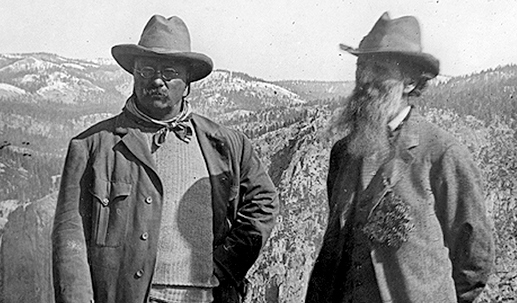 As President, Teddy Roosevelt was in an ideal strategist’s position when he voiced the vision quoted above.
As President, Teddy Roosevelt was in an ideal strategist’s position when he voiced the vision quoted above.
At the time, many of the U.S. regions that are today well-forested (such as New England) were ugly, barren, muddy wastelands. Over a century of rampant, unregulated deforestation to build ships and cities had ensured that outcome.
Too bad Teddy never created a strategy to activate that vision. The U.S. could have started launched its restoration economy a century earlier.
The still-emerging field of regenerative economics was launched in 2002 with the publication of my first book, The Restoration Economy. Today, new approaches to restorative economic development are arising on a regular basis. The “circular economy” trend is one of the best modern iterations of the idea. The Ellen MacArthur Foundation defines a circular economy as “a framework for an economy that is restorative and regenerative by design.”
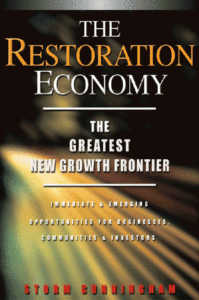 The Restoration Economy was the first book to document the rapid rise of a broad spectrum of regenerative industries and disciplines.
The Restoration Economy was the first book to document the rapid rise of a broad spectrum of regenerative industries and disciplines.
Some of them were quite new at the time of its publication, such as restoration ecology and brownfields remediation.
In fact, the U.S. Environmental Protection Agency had just launched its revolutionary brownfields program (probably the single most efficient federal program in the nation’s history, in terms of return on investment) in 1995, the year before I started writing The Restoration Economy.
Eight of the book’s twelve chapters created a taxonomy of the restoration economy, categorizing eight sectors of restorative development. These eight sectors involve the regeneration of the natural and built environments.
Revitalization of the socioeconomic environment is a fairly automatic outcome of that work, if restorative development of the natural and built environments is done strategically, and with that goal in mind.
I addressed the global climate fifteen times in that first book, but it obviously wasn’t enough, considering how much worse things are now. Since that book was published, we’ve had 9 of the 10 hottest years in recorded history. As I write this, Category 5 Hurricane Dorian just hours ago obliterated the Abaco Islands and Grand Bahama Island in the Bahamas…while the U.S. President was busy playing golf and denying that there’s a climate crisis.
Here’s that original eight-sector taxonomy of the restoration economy, updated to show its adaptive, carbon-negative relevance to restoring our global climate:
- Ecosystem and biodiversity restoration: restored ecosystems sequester carbon while stopping carbon from being released by dying ecosystems, and—done properly—they leave the land more resilient. So this sector is adaptive, mitigating and restorative vis-a-vis the climate.
- Aquifer recharging and waterway/watershed restoration: Nothing is more crucial to surviving climate disruption than the ability to generate fresh water when you need it, and absorb it efficiently when you’re getting too much of it. And restoring a watershed is largely based on growing trees (which sequesters carbon), so this sector addresses climate restoration and adaptation.
- Estuary, reef, and pelagic fishery regeneration: the “blue carbon” sequestration approach focuses heavily on mangrove restoration, which also makes coastlines more resilient. So this sector also achieves both climate restoration and adaptation.
- Regenerative agriculture (ranching, farming and aquaculture): Regenerative farming and ranching sequesters about four times as much carbon as reforestation, so that restores the climate. And, since the industrial ag model it replaces is a huge greenhouse gas emitter, that makes it mitigating, as well. It tends to be far more resilient to drought, not to mention more profitable, so it’s a form of climate adaptation. Regenerative mariculture with shellfish or seaweed leaves the water cleaner. Even better, the mollusks sequester carbon in their shells, and seaweed sequesters five times more carbon than land-based plants, so this sector is both adaptive and restorative, climate-wise.
- Brownfields remediation and redevelopment: This is normally a form of infill development, so it mitigates climate change by reducing both commuting and deforestation (from sprawl). Extracting methane from landfills is also climate mitigation, as is the use of brownfields for producing renewable energy (“brightfields”). Removing contamination from riparian areas (many brownfields and Superfund sites are on rivers and lakes) reduces the spread of toxins during climate-related floods, so this sector is adaptive, as well.
- Infrastructure renewal: Nothing is more crucial to the climate crisis than renovating our global energy infrastructure from fossil fuels to renewables. Doing so in an underground and microgrid design is far more resilient that our current centralized, above-ground grids, so this is a form of adaptation. Renovating our transportation infrastructure to focus less on automobiles and more on public transit, walking and bicycling both mitigates climate changes and makes cities more resilient when disasters hit, so this sector is also adaptive.
- Heritage restoration/reuse: Renovating and/or repurposing the structures we already have mitigates climate change both by reusing the embodied energy and by eliminating the very significant emissions of new construction. So, this sector is more relavent to climate restoration than most people might assume.
- Catastrophe reconstruction: This sector is (tragically) a major growth industry, so we need to be sure we accomplish it in a resilient manner that takes all of the above sectors into consideration. The technologies and designs are already present, allowing us to rebuild in a way that adapts to, mitigates and restores our climate.
So, the restoration economy might now be called the climate restoration economy, since that’s Job One, and the modality is virtually identical. The good news is that regeneration of our built, natural and socioeconomic environments exploded after The Restoration Economy first appeared. (I’m not claiming any kind of causal relationship, of course: it would have happened whether or not I put those words to paper. But I enjoy thinking that the book might have accelerated the trend just a teensy bit.) What was exceptional back in 1996 is now pretty much the norm. Everyone wants to get on with restoring nature and regenerating our cities. We just need to add one rather major new agenda to that original mix: restoring our climate.
You say you don’t believe that restoration is now ubiquitous? What’s one of the least-likely industries you can think of as a sponsor of stream restoration? How about professional hockey? The NHL Foundation pledged to restore 1000 gallons of stream flow to the Deschutes River in Oregon for every goal scored during the 2011-2012 regular season. This was in support of the Bonneville Environmental Foundation’s (BEF) Water Restoration Certificate Program…which is itself another indicator of restorative development’s increasing maturity.
 Regenerative economics was advanced six years later when McGraw-Hill Professional (a now-defunct division of McGraw-Hill) published my second book, Rewealth.
Regenerative economics was advanced six years later when McGraw-Hill Professional (a now-defunct division of McGraw-Hill) published my second book, Rewealth.
One way of differentiating the focus of The Restoration Economy from that of Rewealth is that the former was more about the “ingredients” of revitalization (the various types of asset renewal).
The latter, on the other hand, was more about the “recipe” for those ingredients: how one combines them to create economic growth and increased quality of life (revitalization).
The Restoration Economy was documenting a historic shift in the global economy, so it was more theoretical.
Rewealth contains case studies of places coming back to life in a dramatic and unexpected manner—as well as the professionals and businesses that help them do so—so it was more practical.
Regenerative economics was yet advanced again in 2012 by the great Marjorie Kelly with her book Owning Our Future, which was taglined “Journeys to a Generative Economy.”
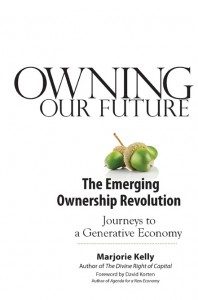 It was published by Berrett-Koehler Publishers, the same wonderful folks who had published The Restoration Economy a decade earlier.
It was published by Berrett-Koehler Publishers, the same wonderful folks who had published The Restoration Economy a decade earlier.
Although Owning Our Future is more about ownership models, and didn’t focus directly on “re”, it conveyed that message indirectly by categorizing economic activities as being either “generative” or “extractive.”
That mirrored The Restoration Economy‘s “destructive development” mode (based on sprawl and the extraction of non-renewable resources) vs. the “restorative development” mode (based on revitalizing the places we’ve already developed, and restoring the natural resources we damaged along the way).
Here’s an excerpt from the Foreword to Owning Our Future, written by David Korten: “Our well-being, indeed our future as a species, depends on restoring our relationships to one another and with the land, the water, the sky, and the other generative resources of nature that indigenous people traditionally considered it their obligation to hold and manage in sacred trust. The architecture of ownership is key.”
Kelly and Korten were right that affecting the behavior of those who own capital and real assets is crucial to restoring both our planet and confidence in our economies. It’s easy to understand people’s distrust of big business when one looks at the blatant hypocrisy of large corporations. They preach the gospel of free enterprise while they’re small and want unfettered access to markets. But as soon the they’re large enough to pull it off, they use their money to get government to restrict the markets, so others can’t compete with them.
The majority of economic activity worldwide now consists of gambling. It’s called “investing” in polite company, but seldom are any real stocks or bonds involved: people and companies are merely gambling on derivatives, and derivatives of derivatives. There is no effective difference between these derivatives and making a bet at the horse track. They are merely a way for those with access to privileged information to siphon money out of the market. If we want economic restoration, we need to first cleanse the economy of giant parasites. Otherwise, it would be like setting a boat on a new course, while ignoring the gaping holes in its hull.
other species, foreign cultures, and even future generations to keep those at the top of this pyramid scheme enriched.
As we know from other, smaller Ponzi schemes, such frauds cannot last.”
– Thomas Fisher, professor, School of Architecture, dean, College of Design, University of Minnesota,
from “Place-Based Knowledge in the Digital Age”, ArcNews, Fall 2012.
The remedy for the Ponzi scheme described in Professor Fisher’s above quote isn’t to improve the scheme by making it more “green” and “sustainable”. Only altering the fundamental basis of wealth creation can subvert it. Economic activity that increases our resource base can flip that pyramid on its head, creating ever-greater health, wealth, and happiness for all.
What’s especially encouraging is that the powers-that-be at the top of the current pyramid can maintain their wealth, if they too make this shift. This minimizes disruption to our political structures, since money is the basis of political power. In other words, this is a revolution that can—in theory—be implemented without bloodshed.
RE: A Prefix-based Strategy for Global Revitalization via Policymaking
The regeneration of our planet could be reduced to a change in prefix. We need to replace “de” with “re“. Transitioning to a global (or local) restoration economy happens when we move…
…from development to redevelopment
…from despoilment to remediation
…from depletion to replenishment
…from demolition to reuse
…from destruction to restoration
…from degeneration to regeneration.
In other words, we need to stop being degenerates, and start becoming regenerates.
The de-re shift could be greatly accelerated via a shift to true-cost (AKA: full-cost) accounting, but that would undermine far too many huge corporation with powerful political connections. The lack of true-cost accounting enables many archaic, inappropriate industries to live far past their sell-by date.
Fossil fuel firms continue to claim that renewables are too expensive. In fact, fossil fuels are many times more expensive, but their costs are hidden. Many other authors have written entire books on the subject, so let me just offer one example to the uninitiated.
Canadian tar sands extraction is a top contender for the most criminally-irresponsible industry on the planet. Their political influence enables them to enjoy freedom from normal business costs. For instance, the good people of Toronto pay about $674 annually per household for their water. The tar sands companies pay $0, and they use the same amount of water annually (370 million cubic meters from a single river) as the entire city of Toronto.
A shift to true-cost accounting would automatically shift economies from degenerative to regenerative activities: the numbers would force it. But don’t hold your breath waiting for it to happen: such a structural shift is too terrifying to entrenched power. Instead, the current incremental approach is the only other option; more of a long-term economic gut renovation than sudden demolition and replacement.
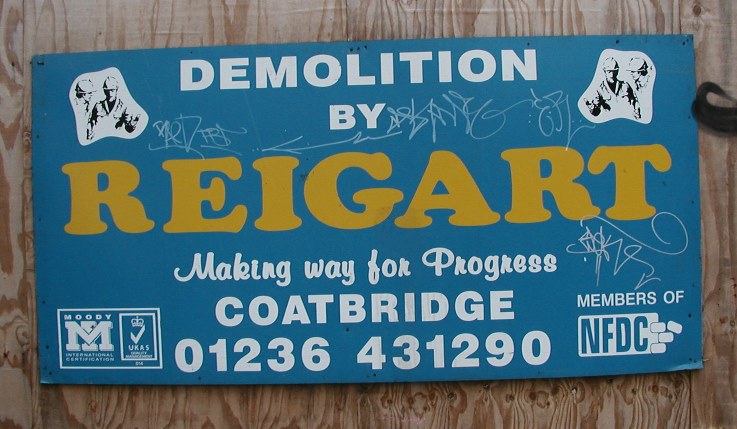
Contractor’s sign at redevelopment site in Glasgow, Scotland. Photo credit: Storm Cunningham.
Regarding demolition:
The repurposing, renewing, and reconnecting of existing natural, built, and socioeconomic assets has long been the foundation of my “restoration economy” approach.
That said, not everything is worth saving. Demolition can, in fact, make way for progress. But demolition without a follow-up revitalization strategy can lead to social and economic isolation.
Some buildings are simply too ugly or too badly-constructed to be worth saving, like the FBI headquarters here in Washington, DC. It could have been declared “blight” the day it was commissioned. The hideous architecture is bad enough, but it was also shoddily built, so it’s a maintenance nightmare.

FBI headquarters. Photo: Storm Cunningham.
While I’m a passionate advocate of historic preservation, I don’t believe trash is magically transformed to treasure on its 50th birthday (50 years is the age a building becomes “historic” in the U.S.; a standard seen as ridiculously low in older nations).
Other buildings are rendered un-reusable by water damage from poorly-maintained roofs, or by vandals (such as copper thieves).
But in general, planners and mayors often avoid the complexity of repurposing and renewing existing assets, and just go for the simplistic “wipe it all clean and start afresh” approach of mass demolition. This can sometimes make sense in places that desperately need to downsize their infrastructure maintenance budget to cope with a drastically lower population (like Youngstown, Ohio), but only if they have a strategic renewal process in place. Youngstown’s “city shrinking” vision was both innovative and brilliant, but they apparently lacked a strategy for overcoming the obstacles to it, and/or a process to implement that strategy.
Speaking of Ohio, the Slavic Village neighborhood of Cleveland provides some insights into the relationship of demolition and rehabilitation. Slavic Village was the epicenter of the national foreclosure crisis: it had the highest number of foreclosures of any zip code in the country in 2008 and 2009.
The predominantly African-American neighborhood is now revitalizing nicely, thanks in large part to a not-for-profit organization called Slavic Village Development (SVD). Its Executive Director, Chris Alvarado, credits much of their progress to SVD’s partnership with the Cuyahoga Land Bank, which was created in 2009 specifically to deal with the foreclosure crisis.
The land bank’s economic impact over that decade is estimated $1.43 billion, based on restored property values accomplished via a combination of demolishing and rehabilitating distressed structures so the properties can be returned to Cuyahoga County’s tax rolls, plus the jobs created in the process.
Until recently, federal and state funding assistance focused on demolition, so that’s what they did. Now that these funds are drying up, the Cuyahoga Land Bank is shifting to what often makes far more sense: rehabilitation. They are also adding commercial properties to their historic focus on residential (a shift I’ve recommended to a number of land bank clients over the years).
Wabi-sabi: Some decrepit structures need neither renewal nor demolition to revitalize a place…just some promotion.
In Japan, the aesthetic concept of wabi-sabi (first brought to most Americans’ attention by TV’s Bart Simpson, of all “people”) is one of the characteristics that dramatically sets their culture apart from that of the United States.
In Japan, they tend to appreciate the uniqueness of a flaw or irregularity in a new product (it gives it personality: making it an object only one person owns), and the decrepitude of an old object. Wabi-sabi is a world view centered on the acceptance of transience and imperfection. The aesthetic is sometimes described as one of beauty that is “imperfect, impermanent, and incomplete.”
Characteristics of the wabi-sabi aesthetic include asymmetry, roughness, simplicity, economy, austerity, modesty, intimacy, and appreciation of the ingenuous integrity of natural objects and processes.
Here in the USA, we worship visual perfection. And not just in inanimate objects, either: We warehouse our old people in commercial operations we like to call retirement “homes”, so we don’t have to see their physical deterioration on the street. Those with gross deformities, like goiters or facial cancers, don’t dare go into public if they can’t afford cosmetic surgery (which is common, what with our being in the only industrialized nation without universal health care).
In most other nations, by comparison, the ancient and the afflicted can walk in plain view down the street without drawing looks of disgust, horror or even outright anger at their polluting of our visual environment. In our drugged, commercial American cocoon—where pharmaceuticals and buying new stuff fixes everything—we don’t like to be reminded that death and disease exist.
We Americans waste vast amounts of fresh produce because it isn’t “perfect”. An estimated 25-40 percent of all food grown, processed and transported in the United States is never eaten. We don’t seem to care if it’s loaded with toxic pesticides—or if it’s rendered tasteless, nutrition-less, and potentially carcinogenic by genetic engineering—as long as it looks good.
“Produce is art,” says Jordan Figueiredo, solid waste specialist for the Castro Valley Sanitary District in California’s Bay area. “It’s amazingly nourishing. It should be celebrated.” He uses various social media accounts at @UglyFruitAndVeg to show lovable images of outcast fruit and vegetables. He says this helps people understand the issue better and makes them want to celebrate–rather than waste–produce.
As so often happens, North America trails behind Europe in embracing its love for ugly fruit and vegetables. France’s third-largest supermarket chain, Intermarché, launched a campaign in March of 2014 to get consumers to see the beauty of ugly produce. Television and print ads hailed the attractiveness of “the grotesque apple,” “the failed lemon,” “the disfigured eggplant,” “the ugly carrot” and the “unfortunate clementine.” One aisle of a store just outside Paris is devoted to “inglorious” produce and sold at a 30% discount. It’s hugely successful.
Of course, Americans aren’t alone in demanding that even old things look new. Restoration of historic buildings and old artwork is a multi-billion-dollar per year business worldwide. In most cases, that’s a good thing, since it enables them to enjoy a new life, often with a new, more relevant purpose.
But some ancient art is actually more beautiful in its aged state. And leaving a few well-built abandoned buildings unrestored adds a bit of age diversity to the visual environment.
In Gary, Indiana, they seem to get this concept. City Methodist Church, a grand, Gothic cathedral, has been abandoned for almost 50 years. Yet you can see it all over the internet, on Flickr and Instagram, and in movies like Transformers 3. It’s billed as “one of the best known and most popular Midwest locations for urban explorers.”
The church, which has been vacant since the 1970s as the steel industry bottomed out in Chicago and northern Indiana, has enjoyed an unlikely second life as a particularly beautiful, even sublime, decaying structure…what some call “ruin porn,” the ugly American name for urban wabi-sabi.
The church was in the news recently after it became 1 of 33 winners of the Knight Foundation’s Cities Challenge, which awards cities around the country with grant money for their best project ideas. Gary’s Redevelopment Commission received $163,333 to transform City Methodist into a safer, more official tourist destination for the city.
The church is one of the most visited places in the city, despite the fact that it’s not safe to explore. “The fact that the building, in its current condition, is not structurally sound has not deterred visitors,” says Sarah Kobetis, Gary’s deputy director of planning.
“So turning the space into a ruins garden felt like a mutually beneficial way to preserve what’s left of one of the city’s most notable structures, while also creating a new public amenity in downtown Gary for both tourists and community residents to enjoy,” she continued.
Gary isn’t the only Rust Belt city that has iconic “ruins” with considerable architectural value. And it’s not the first city whose ruins have become popular tourist destinations in their decay. But Gary might be the first to use these ruins in a purposeful, strategic manner to boost their economy.
As mentioned in Chapter 1, the science of complex adaptive systems answers some important questions, such as how do living systems arise, how do they evolve, and how do they recover after massive disruption. Today, most of the algorithms that run massively complex tasks (financial trading, weather forecasting, Netflix recommendations, etc.) derive in whole or in part from the insights of complexity science.
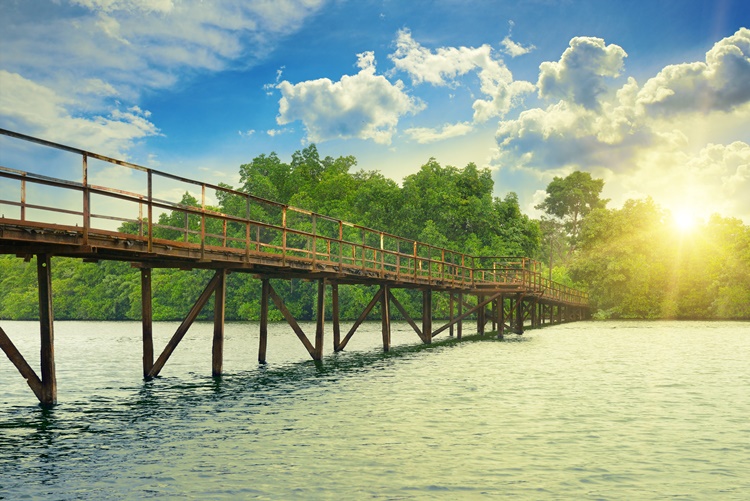 Applying these insights at the human level is more of a challenge, but it can be done. For instance, politicians wishing to transform their city or nation should know that complex systems are best altered by changing the most basic decision-making rules of the system. These rules should guide individual “agents” in the desired new direction, while being flexible enough to allow decision makers in the field to adapt them to local needs and challenges.
Applying these insights at the human level is more of a challenge, but it can be done. For instance, politicians wishing to transform their city or nation should know that complex systems are best altered by changing the most basic decision-making rules of the system. These rules should guide individual “agents” in the desired new direction, while being flexible enough to allow decision makers in the field to adapt them to local needs and challenges.
Most urban planning instead tries to make arbitrary decisions for local agents. This is not a criticism of the concept of planning, only the practice, which is often based on centralized—rather than distributed—control, and on blind obedience to the plan (in those few cases where the plan is actually implemented).
– from Design With Nature by Ian McHarg
Sometimes, only one local rule needs to be changed. For instance, the struggling downtowns of many small U.S. communities are hampered in their efforts to compete with sprawl malls outside of town by archaic “blue laws” that ban sales of alcohol on Sunday, or that prohibit businesses from being open on Sunday. Eliminating those rules might be all that’s needed to bring some downtowns back to life (though it’s seldom that simple).
Two core problems that undermine sustainability and resilience worldwide are both related to accounting rules: 1) the aforementioned lack of full-cost accounting, and 2) lack of what I dubbed trimodal accounting and policymaking in my first book, The Restoration Economy. Due to the lack of full cost accounting, both natural disasters and fossil fuel extraction go onto the books as economic growth, because we credit the jobs they create. But we don’t debit the lost value in damage or depletion, which violates the basic principle of double-entry bookkeeping. The emerging field of attribution science is a step towards a solution to that problem.
 The latter, trimodal accounting, recognizes that there are three basic modes of development:
The latter, trimodal accounting, recognizes that there are three basic modes of development:
1) New Development (sprawl and virgin resource extraction);
2) Maintenance/Conservation (maintaining the built environment and conserving what’s left of the natural environment); and
3) Restorative Development (redeveloping existing communities and replenishing natural resources.
Current government reporting only accounts for the first two modes: we’re inundated with figures like “new housing starts”, but redevelopment and restoration activities are largely invisible (or buried in maintenance as “capital improvements”). We can’t manage what we don’t measure. Restorative development is where almost all of the good economic news resides these days.
While we can certainly have too much sprawl and too much virgin resource extraction, we can’t have too much restorative development or revitalization, provided they are done well. I’ve been doing this work all over the world for about two decades, and I have yet to hear someone say “hey, we’ve got to slow down this community revitalization program: our incomes and quality of life are way too high!” I’ve never heard anyone say “hey, we’ve got to slow down this river restoration program: the water is way too clean, and has far too many native fish!” I’ve never heard anyone say “hey, we’ve got to slow down this brownfields redevelopment program: our community is running out of contaminated properties!”
Too many people conflate population growth and economic growth. I’m always careful to specify that unlimited economic growth is possible if based on restorative development, but some people still take me to task, thinking that economic growth and population growth are intrinsically linked.
If there were 100 people on an island, and each person’s income went up 10% annually—based on greater productivity and the enhancement of natural resources—and the population remained at 100, how would that be unsustainable? We could actually have economic growth and population decrease simultaneously, which would be the best of all worlds.
means we’ve reached a fundamental turning point in that relationship.”
– Doug Boucher, Director, Tropical Forest/Climate Initiative, Union of Concerned Scientists
As we enter the Anthropocene Epoch, restorative development will be—directly or indirectly—the source of most economic growth. Embedding simple rules like repurposing, renewing, and reconnecting into policy can accelerate a transition into restorative development.
Many folks rightfully bemoan the plague of obsolete, decrepit, vacant structures and toxic, degraded, depleted lands and water bodies. Here’s a more positive and constructive way of perceiving the situation: we have a wealth of renewable assets.
That massive inventory of renewable assets is fueling the $3 trillion/year global restoration economy.
Strategies and processes aren’t just needed to revitalize cities and regions: entire nations require need them.
For instance, Wales has long been an economic basket case. They were heavily dependent on coal mining for almost three centuries, so the shift to cleaner forms of energy, and cheaper sources of coal, hit them hard.
But that’s been the case for decades. During that period, the European Union repeatedly awarded Wales the highest level of economic aid (called Objective One) in 2000, 2007 and 2014. Since 2000, an additional £5.3 billion has been injected into Wales from the EU, on top of major grants from the British government. But the economic needle hasn’t moved. Why?
I would posit that, while there’s been an unending flow of ideas and tactics designed to revitalize their economy, there’s never been a cohesive vision and strategy, or a process to deliver the fragmented visions they do have.
Some good approaches have been suggested, such as keeping the focus on energy, but shifting to renewal sources. But none of these visions were supported by a national strategy: they only had a long string of projects.
The turning point for long-suffering Wales will come when it has a process that links a regenerative program, regenerative vision, regenerative strategy, regenerative policies, regenerative partners and regenerative projects. And they will need an entity to house that program, because—believe it or not—Wales doesn’t have an economic development agency of any sort.
We often hear economists “explaining” economic collapses, both local and national. Where we seldom see economists is in economic rebirth situations; either during or after the fact. Why is that? Most economists are similar to engineers, in both their love of control and their fear of surprises. This is why few degreed economists work in the messy fields of community revitalization or natural resources restoration.
And nearly three-quarters said that their commitment will increase in the year ahead.
The bad news? They may not actually be able to define sustainability.”
– “The Dilbertarian Dilemma of Corporate Sustainability” by Paul Michelman, Harvard Business Review, 2/2012.
For three decades, well-meaning folks have been in the thrall of sustainable development. Many of the healthiest and most enlightened activities on the planet take place under the rubric of sustainability, but that’s mostly for lack of a better term. Sustainable development was coined as a dialog tool, a compromise designed to bring together the forces of unbridled economic growth and the forces of environmental responsibility.
As a dialog, it has achieved some wonderful things. But that’s all it is: a dialog: it lacks rigor. There’s been no shortage of attempts to create sustainability metrics, but a shortage of such metrics persists.
At my university talks and workshops, I’m increasingly picking up a “sustainability sucks” vibe from students and recent graduates. They are increasingly seeing it as the failed paradigm of their parents and grandparents’ generations.
Many online dialogs have been started in recent years by folks who recognize the problems with sustainable development, and who are looking for a better name. Smart growth, breakthrough economy, clean economy, conscious economy, cooperative economy, capitalism 2.0, sharing economy, experience economy, collaborative economy, information economy, knowledge economy, and so on.
Most of those descriptors exist only in the mind: you can’t see them in action. On the other hand, we’re surrounded by buildings and landscapes that are being—or have been—restored. As is often the case, the terminological solution is hiding in plain sight: restorative (or regenerative, if you prefer) economic development. Reconomics, in other words.
energy devoted to changing vessels is likely to be more productive than energy devoted to patching leaks.”
– Warren Buffett
The redevelopment of existing communities and the restoration of damaged natural resources already accounts for at least $4 trillion annually, worldwide. But to tap its full potential, we need policies that establish it as the default mode of economic growth, and that establish some basic quality/ethical controls. The current default—which is encouraged by policy and subsidized in practice—is still mostly sprawl and virgin resource extraction.
Why do we put so much attention on the idea-of-the-month hyped by publishers, and so little on a multi-trillion-dollar reality that’s staring us in the face? Part of the problem is that we assume restorative development is merely an aspect our normal economic paradigm, as opposed to an emerging alternative. As a result, the restoration economy’s numbers are buried. Try to find government reports that break-out the “re” costs and benefits, separating them from the “de” costs and benefits.
You won’t find them. Instead, you’ll find redevelopment, regeneration, renovation, reuse, restoration, etc. buried under budgets categories like “maintenance” and “capital improvement”, where they give the appearance of supporting the status quo, rather than subvert it.
Often times, “redevelopment” is simply used synonymously with “development”, which is like not distinguishing between virgin materials and recycled materials when manufacturing a bag, bottle, or can. We can see the wisdom of defining and measuring the difference between recycled and virgin paper, glass, or metal. So why can’t we see the wisdom of being able to distinguish recycled land from virgin land…a recycled city from one built of virgin farmlands of forests?
… we risk passing off anything included in GDP as value creation. In the process we reward those activities,
so it becomes sort of a feedback loop: because they’re valuable, we consider them valuable and
they will be valued by society so policymakers will try to increase those activities,
and that then also increases those activities’ share of GDP.”
– Mariana Mazzucato, author of The Value of Everything: Making and Taking in the Global Economy.
Most large, publicly-traded real estate developers don’t want that distinction to be made. They need to make their quarterly growth projections to keep Wall Street happy, and that’s easier to do developing a few large tracts of greenfields than it is redeveloping many infill, adaptive reuse and brownfields projects. They are quite happy being free to make money by sprawling a community in a way that kills its historic downtown and undermines its environmental health and quality of life. When they do take on the occasional redevelopment project, they are just as happy to be able to doff the black hat and don the white hat, playing the role of community hero. Thus, their conflation of the labels “developer” and “redeveloper”. This confusion permeates all of economic theory and policy: academics perpetuate it and politicians implement it.
Complex systems evolve; sometimes incrementally, sometimes discontinuously, spasmodically, and asymmetrically. The incremental approach is the norm, with only occasional bursts of “punctuated equilibrium”. Thus, we should expect the next mode of economic growth to emerge in parallel with the old mode. But politicians want us to believe we can fix everything by tinkering with the old model (thus, not threatening the old money that backs their campaigns).
If we’re not willing to reinvent capitalism, we at least need to measure it accurately (full-cost accounting). If we do that, the insanity of fossil fuels, fission energy, sprawl, and unsustainable resource extraction becomes evident, and the sanity of restorative development and clean tech becomes equally evident. Then, we merely need to shift our policies and efforts from one existing reality to another: no “magic solutions”, “global awakenings”, or improvements to human nature needed.
The primary reason so many governments and major corporations have sustainability initiatives is because they know that it’s just a dialog. It can’t be measured, so government and corporate (and non-profit) sustainability programs can’t fail. They love that.
it is time to move on to restorative development and restorative economies.”
– Richard Chartres, Bishop of London.
On the other hand, restoration, reuse, renovation, and most other “re” functions are eminently real. We can measure how much more a restored historic theater is worth. We can measure how many more fish are in a restored river. We can measure how much healthy topsoil has been rebuilt on a restored farm. We can measure how much more biodiversity inhabits a restored meadow. We can measure how much less toxicity is in the ground at a remediated old industrial site.
It’s true that we can measure components of sustainability: waste reduction, energy efficiency, etc. But there’s no metric for sustainability itself. We can’t point to anything and say with surety “that’s sustainable”. Sustainable for how long: 100 years? 10,000 years? Sustainable with what population: 8 billion? 80 billion?
But we can easily point to what’s unsustainable. For instance, as I write this on June 15, 2019, the Amazon rainforest has lost 739 square kilometers just during the past 31 days. That’s equivalent to two football (soccer) fields every minute.
Due to our short life spans, each generation keeps ratcheting-down the notion of what a healthy world looks like: it’s whatever existed when they were young. If we face up to how degraded, depleted, fragmented, and contaminated our planet is now, we would ask “Who wants to sustain this mess?“, as many young folks are now asking.
A major problem is institutional dynamics. The grants supporting many non-profits and academic programs are linked to the words “sustainability” or “sustainable development”. Changing the organization’s mission to “regeneration” or “restorative development” would quite literally threaten their economic survival.
So, they instinctively stop listening—or even go on the attack—when someone questions the efficacy of the sustainability dialog. As Upton Sinclair so famously said: “It is difficult to get a man to understand something, when his salary depends upon his not understanding it!” The irony, of course, is that sustainability advocates frequently invoke Sinclair’s insight when explaining the intransigence of fossil fuel executives, dam engineers, big box chains, etc. regarding climate change, river health, and sprawl, respectively.
About 24% of all usable (by humans) land on the planet is considered “degraded”. The estimated economic loss of this degradation is about $40 billion annually, primarily from soil erosion by water and wind. On September 24, 2013, a report was presented to to the UN Convention to Combat Desertification conference in Windhoek, Namibia. It stated that restoration and better management of degraded lands could deliver up to $1.4 trillion (USD) per year in increased crop production.
provides the critical missing link to enable human society to create a net positive impact on the environment.”
– Jim Hallett, Board Chair of the Society For Ecological Restoration (SER).
Sustainable development should have started at least two centuries ago. But it didn’t, so the world is now far too damaged to speak of sustaining as a goal. The economic and social degradation—and opportunities—presented by this situation don’t get as much attention as one might expect, given its vast size. This is mostly because it’s primarily the rural poor who bear the brunt of the suffering: the 1.2 billion people worldwide who depend on small farms for both their diet and their income. Given the failure of both their national leaders and global NGOs to address it, people are taking arid land restoration into their own hands.
“A more accurate economic evaluation is crucial to prevent and reverse land degradation by raising the profile of the issue with policymakers,” says Richard Thomas, lead author of the study, and assistant director of the drylands ecosystems program at the UN University’s Institute for Water, Environment and Health, based in Hamilton, Ontario, Canada.
Ecological restoration is a powerful economic revitalizer, but its full value is often underestimated because our metrics are too simplistic. For an example of folks who are trying to take a more intelligent, systemic approach to quantifying ecological restoration’s economic impact, here’s an excerpt from a March 2012 report titled “Economic Impacts of Ecological Restoration in Massachusetts” by the Massachusetts Department of Fish and Game‘s Division of Ecological Restoration:
“Impacts can be observed in two phases:
- Short term effects: These are benefits associated with increased demand for employment, materials, and services in Massachusetts during the Construction / Installation Phase of a project. Examples include: construction labor, materials costs, engineering time, permitting activities.
- Long-term effects: These are benefits associated with the Operational Phase of a project. These may include, for example, expenditures associated with increased boating, hiking, birdwatching, or beach visitation that may result from the project implementation.
Our study uses IMPLAN to examine the regional economic benefits associated with short-term construction/installation phases of restoration projects:
- Direct effects are production changes or expenditures that result from an activity or policy. In this analysis, direct effects are equal to the costs of the MA DER project, which we assign to appropriate economics sectors.
- Indirect effects are the “ripple” impact of local industries buying goods and services from other local industries as a result of the project (e.g., restoration project requires purchasing plant seeds or cement) within Massachusetts. Additional impacts that occur outside of Massachusetts are not included in these effects.
- Induced effects are changes in household consumption arising from changes in employment and associated income (which in turn results from direct and indirect effects) in Massachusetts. For example, these may include additional spending by construction workers with their wages, as well as additional spending by seed growers or cement companies with income received from sales for use in the restoration project.A DER project, which we assign to appropriate economics sectors.”
Our societal learning disability vis a vis the shift from new development to restorative development is producing a societal earning disability, as our resource base crumbles.
Traditional economics is a never-ending search for the unicorns of stasis, equilibrium, and predictability. It arbitrarily assumes linear, mechanical effects in the system, and purely rational behavior in the individual agents. Both assumptions are plainly absurd, but without them, economists wouldn’t be able to create the illusion that they know what they’re talking about.
So, don’t look to economists for insights into economic growth in general, or devitalization and revitalization in particular. As a January 14, 2019 article by Peter Coy in Bloomberg Businessweek stated, “The open secret of the economics profession is that its practitioners don’t have a theory for why expansions die. Or rather they have several theories, each of which contradicts the others, and none of which is fully supported by the data. Because economists don’t know why recessions start, they can’t predict when one will start.”
Like reductionist disciplines, conventional economists are loath to recognize that the whole is more than the sum of its parts. Facing up to that obvious reality messes up the simplicity of their assumptions, and their ability to “explain”. Economists’ inability to make accurate predictions undermines its claim to be a science. That’s why they normally stick to “explaining” what has already happened.
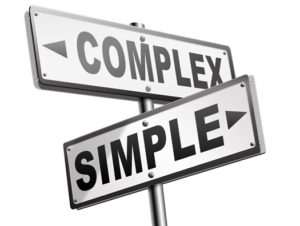 This, in turn, is why most economists either 1) teach economics, or 2) work for government agencies and large corporations. In the latter situations, their primary duties involve justifying whatever course of action has already been decided upon, and legitimizing previous actions.
This, in turn, is why most economists either 1) teach economics, or 2) work for government agencies and large corporations. In the latter situations, their primary duties involve justifying whatever course of action has already been decided upon, and legitimizing previous actions.
Conventional economics is designed by economists for economists, and so has little relevance to the chaos and complexities of reality. But an economy—by definition—encompasses natural resources, infrastructure, agriculture, urban societies, information, technology, psychology and much more. This inherent holism makes an economics degree a wonderful background for anyone doing useful, high-level work (i.e. – not economics itself).
The more recent trend towards “complexity economics” is far more courageous. It attempts to understand a world where individuals react to patterns that their decisions have helped create, and how those patterns alter as a result of their reaction, which means individuals must react again.
In complexity science, it’s generally recognized that negative feedback stabilizes systems (that’s “negative” as in reducing, not as in bad). Thermostats offer a simple example of negative feedback. They monitor the temperature in a room, raising or lowering it when the temperature violates an established threshold. Negative feedback thus reduces fluctuations. The supply and demand dynamic in economies is another example. Equilibrium prices are established and maintained thanks to the negative feedback between the price of a product and demand for it (in the idealized world of accepted economic theory).
On the other hand, positive feedback tends to destabilize systems (that’s “positive” as in enhancing, not as in desirable). The melting of polar icecaps from atmospheric warming is an example of positive feedback. The smaller surface area of ice reduces the albedo (energy-reflecting) effect of the ice, thus accelerating the melt by raising the average atmospheric temperature.
The recruiting process in honeybee hives is also an example of positive feedback. Scout bees dance to advertise a new hive site they find attractive, thus recruiting additional scouts to visit that site. The more bees that are thus recruited, the more will be advertising the new site, which recruits still more. Eventually, the number of scouts promoting a particular site passes a threshold (“tipping point”), and the entire hive swarms to the new site. That’s maximum social disruption, at least in the short term. Long term, it’s an effective resilience-enhancing mechanism.
In terms of community revitalization and resilience, it’s negative feedback that stabilizes the society (such as via policing) or the economy (such as via budgets and policies) when perturbed. But it’s positive feedback that drives the acceleration of either revitalization or devitalization. Positive feedback loops produce both increases and decreases that are far out of proportion to the inputs.
– journalist David Thorpe, Nov. 12, 2014
Whereas traditional economic theories only acknowledge negative feedback loops (diminishing returns), complexity economics also accepts the reality of positive feedback loops (increasing returns). These are the primary source of economic surprises, like cities that suddenly spring back to life “for no reason.” Of course, elected leaders usually attribute such scenaria to their own brilliance, and hire economists to prove it.
This emergent property known as an increasing returns situation is a synergistic “whole is greater than the sum of the parts”-type behavior: output increases by a larger proportion than the increase in inputs.
The increasing returns phenomenon has been known of since the time of Adam Smith, but conventional economists closed their minds to it, because it throws all of their most beloved theories for a loop (pun intended).
In 1939, Sir John Hicks, a founder of modern economics, said that acknowledging the reality of increasing returns would wreck established economic theory. It would rob standard economic models of the two qualities most prized by economists: determinism and simplicity. That’s still the case today.
The courageous work of forcing economics to deal with reality was pioneered in the modern age by Stanford economist W. Brian Arthur.
This is similar to the way classical (e.g. Newtonian) physicists choose to believe that the quantum realm can’t affect the physical realm (even though our physical reality is composed entirely of quantum reality). It’s not due to any paucity of intellect to grasp the obvious (that they are just two views of the same universe, at different scales), but due to lack of courage to face the ramifications (which would admittedly shake our society, and many of its most revered institutions, to the core).
For those of you who are familiar with quantum dynamics, one might say that using the RECONOMICS Process (described in more detail later) helps a community select (on some unconscious level) the probability wave leading to a revitalized future.
Increasing returns doesn’t just apply to economics, of course. Witness the small amount of “social currency” issued by individuals such as Martin Luther King, Nelson Mandela, or Gandhi, and the vast amount of that social currency that ended up in circulation.
Such movements could be considered “social revitalization”, and they succeed due to the same three dynamics often found in successful economic revitalization: confidence, momentum, and alignment.
The opposite of such movements also arise—those promoting fear, ignorance, and separation—and these produce both social and economic devitalization.
Acknowledgement of the reality of increasing returns thus makes complexity economics the only form of economics that can deal with the dynamics of revitalization.
An obvious factor in devising any successful strategy is basing it on a reasonably accurate perception of the situation one wishes to change. Turning a blind eye to the messy, complex nature of economic revitalization—local, regional, or national—is not an option in the real world, as it is in academia.
In the summer of 1996, Harvard Business Review published one of the most influential articles in its long history: W. Brian Arthur’s Increasing Returns and the New World of Business.
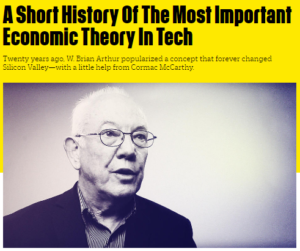 Two decades later, the December 7, 2016 issue of Fast Company magazine featured an article titled
Two decades later, the December 7, 2016 issue of Fast Company magazine featured an article titled
A Short History Of The Most Important Economic Theory In Tech. In it, author Rick Tetzelli says “the theory of increasing returns is as important as ever: It’s at the heart of the success of companies such as Google, Facebook, Uber, Amazon, and Airbnb“.
Business strategists rely on increasing returns, but the theory has yet to make any serious inroads in the practice of community economic revitalization.
A dreamed-of goal of all revitalization efforts is to trigger an increasing returns situation. That’s what the RECONOMICS Process is designed to do. Combine an acceptance of increasing returns with the trimodal development perspective plus full-cost accounting, and one has a solid foundation for a new field of study: resilient economies, or reconomics for short. Its purpose would be to generate useful insights into the process of bringing places back to life, leading to better strategies and management.
Finance and tax policies for resilient prosperity
they began looking for properties to convert. By 2018, 89 buildings with 10,278 apartments had been converted
in downtown Los Angeles. Downtown LA is once again a mixed-use district, buzzing with life 24 hours a day.”
– Alexander Garvin, The Heart of the City (Island Press, 2019)
After strategy and program, policies are the most frequently overlooked aspect of revitalizing a place. When good policy gets translated into legislation, with teeth and/or sufficient funding, it can work wonders. A national policy of supporting the preservation of historic buildings created the federal Historic Tax Credit which—over its first 36 years—created 2.3 million jobs, leveraged $117 billion in investment, and rehabilitated over 41,250 buildings, which helped revitalize many downtowns throughout the U.S.
Any place that launches a revitalization or resilience initiative without creating supportive policies (and eliminating counter-productive policies) is inviting failure in the short term, and virtually guaranteeing failure in the long term. Such failures most commonly affect financing. “Policies” and “budget” are together in the RECONOMICS Process because policies aren’t “real” if not reflected in the budget.
Financing for revitalization and resilience efforts is just as siloed and fragmented as are the many professions, organizational types, and government agencies. There’s a great opportunity for innovative leadership in this area. We’ve so far documented many obstacles faced by those wishing to renew neighborhoods, cities, regions, and natural resources, but one challenge almost everyone shares is funding.
Most folks assume the primary problem is the quantity available, but that’s an illusion: there’s no shortage of money. As stated earlier, of the three sub-trends of the adaptive renewal megatrend—regeneration (revitalization), resilience, and adaptive management—revitalization is the most important focus, since that’s where the majority of the current funding is targeted, usually labelled “redevelopment” or “capital improvements” in the U.S.—or “regeneration” in the UK—when the focus is cities.

Downtown Pittsburgh, PA on October 28, 2019: Mapping decrepit infrastructure so it can be renovated before this happens is a good idea. Photo by anonymous via Twitter.
The problem lies more in finding the appropriate funding when its needed. This is a great opportunity for a tech company. Linking it with mapping would be ideal, so maybe Google or Esri should be looking into this. A single source—localized and global—of information and links to regenerative foundation grants, government grants, community bonds, startup financing, bridge financing, equity investors, impact investors, individual investors, crowdfunding, institutional investors, tax credits, etc. would be magic.
Add in links to relevant tools and models such as land trusts, conservation easements, TIF, CDC, BID—all focused on “re” activities—and the fixers of the world could spend more time actually fixing things, instead of finding resources and reinventing wheels.
The map would allow filtering according to the type of renewable asset: brownfields, historic structures, damaged waterways/ wetlands, forests, degraded farms/ranches, depleted fisheries, obsolete infrastructure, rundown parks, vacant lots, etc. Such a tool would allow organizations like land banks to become far more holistic in their revitalization efforts. And it would enable resilience efforts to more easily integrate with revitalization agendas.
to river restoration to show the world that this can be done.”
– Joppe Cramwinckel, World Business Council of Sust. Development at 5th European River Restoration Conf. (2013)
It often seems that there are too many sources of money—which complicates revitalization and resilience—but the real problem is the lack of a good tool for finding them. This is especially problematic in smaller communities lacking local agencies to attract state/provincial and federal funding. For instance, creating a park to revitalize downtown Greenport, NY (population 2200) was a $14.9 million effort that used the following financial tools (thanks to N. David Milder of DANTH and Andrew Dane of SEH for data from their Oct. 23, 2014 “Some More Thoughts on the Economic Revitalization of Small Town Downtowns”):
- $4 million of town money. This included $1.2 million from a general obligation bond offering to buy the foreclose property, $1.5 million from their Capital Improvement Fund, etc.;
- 25 grants from a local, state and federal agencies;
- Private funds from the estate of a local resident; and,
- Donation of a full-sized carousel by Northrop Grumman Corporation (to help fund park operation via $200,000 from the carrousel’s projected 100,000 annual riders).
Many additional funding sources suddenly appear when project leaders climb out of their mental silos. For instance, a historic building is often viewed as just that: a heritage asset. But it’s within a watershed, so installing a green roof—or bioswales in the landscaping—might qualify it for grants or tax credits related to restoring the watershed. It might be in a low-income neighborhood that would entitle it to New Market or other tax credits, depending on how it is going to be repurposed. It might contain hazardous materials, entitling it to brownfield remediation resources. An unused portion of the property might be ideal for an urban farm or a farmers’ market, entitling it to grants related to enhancing a locally-based food system, or fixing a “food desert” situation. It might be an ideal site for affordable housing, which opens up another realm of funding and tax credits.
– Dr. Martin Luther King, Jr.
The list of potentially-connected agendas that could lead to additional design, development, start-up, or operational funding is almost endless. Normally, the people proposing projects are unaware of these overlaps. Even when they are aware of them, they often lack the manpower and expertise to investigate or pursue them. But the kind of integrated funding locator described above would ideally suggest non-obvious agendas and related resources.
This could make all the difference in a project’s financial viability. It would also improve the project’s design and appeal: the more amenities a place offers, the greater the geographic area from which it will pull customers and visitors. A park with beautiful natural features will generally attract more users if it also has historic features.
Many federal and state funding sources focus on programs, not projects. An example in the U.S. is the HUD-DOT-EPA Partnership for Sustainable Communities. So, creating a local process that includes an ongoing program broadens your funding opportunities. This book’s subtitle reads “The path to resilient prosperity” because resilient prosperity should be treated more as a path than a goal. The regenerative process you’ll learn here doesn’t suddenly achieve resilient prosperity at the end of your effort: it produces it in increasing amounts from the very beginning, as you apply the process. There is no “end of your effort,” except maybe on the day you decide you no longer desire resilient prosperity.
Such national programs often focus on clean energy, resilience, poverty, etc. All relate to the creation of resilient prosperity, but most can’t be accessed without creating a relevant local program. Governments and foundations are (finally) realizing that most of these societal and environmental challenges can only be addressed by ongoing programs, not by one-time projects. So the RECONOMICS Process gives you the necessary receptacle for such funding.
Revitalizing Taxation Strategies
— they wouldn’t be economists if they didn’t — yet they tend to deflect criticism that they themselves could be
negatively influenced by their gigs as consultants, board members, and advisors.”
– Justin Fox, “Have Economists Been Captured by Business Interests?”, Harvard Business Review, September 8, 2014
The second aspect of attracting new sources of funding is to tax only what you want to reduce in your community or region, so as to increase desirable behaviors. This approach isn’t as simple as grant-writing, but has significantly greater potential for making the structural and policy changes your community needs to create resilient prosperity.
For at least a century, practical economists have recommended taxing those activities we want less of, and using some of the resulting revenue to encourage what we want more of. Using fossil fuel taxes to fund research and development of renewable energy (or the creation of public transit) is an obvious application of this approach. The use of tobacco taxes to fund preventive health care/education is another.
In the same manner, places can reduce sprawl and unsustainable resource extraction—while increasing urban revitalization and natural resource restoration—via sprawl and/or extraction taxes. In most cases, sprawl developers don’t pay the full public cost of providing infrastructure and services to their projects. Even where they do, their projects usually decrease local quality of life by reducing greenspace, damaging watersheds, adding to traffic congestion, increasing air pollution, and devitalizing historic downtowns.
It’s only fitting then, that—in addition to paying for infrastructure and services directly related to their projects—they also pay a “revitalization fee” to boost the local resilience and quality of life in ways that help offset the negative impacts of their sprawl development. Such a fund could boost public transit, brownfields cleanup, infill development, watershed restoration, historic structure renovation, etc.
Likewise, resource extraction companies (lumber, fossil fuel, mining, and ranching, etc.) often pay nothing (or a bare pittance) for the public resources they deplete and damage. They often aren’t required to fund post-extraction restoration. Even when they are, they usually just declare bankruptcy and create a new corporate entity to avoid paying.
Requiring substantial restoration escrow accounts prior to mining, fracking, clear-cutting, etc.—in additional to fair compensation to the public for the value of lost natural capital—could go a long way towards funding resilient prosperity in the region. This has recently become the norm with mining in many U.S. states.
In a January 27, 2015 New York Times Op-Ed, David Brooks said, “The big debate during the 20th century was about the relationship between the market and the state. Both those institutions are now tarnished. The market is prone to devastating crashes and seems to be producing widening inequality. Government is gridlocked, sclerotic or captured by special interests. …many of the most talented people on Earth have tried to transform capitalism itself, to use the market to solve social problems. …Impact investing is probably the most promising of these tools. Impact investing is not socially responsible investing. Socially responsible investing means avoiding certain companies, like tobacco… Impact investors seek out companies that are intentionally designed both to make a profit and provide a measurable and accountable social good.”
Private impact investors (as Brooks mentions above) can undo much of the existing damage, but local governments don’t suffer as greatly from the problems he describes. They are far from helpless.
Property taxes offer an obvious area of reform. Currently, they are based on the entire property, both land and improvements (such as buildings). This has two problems: 1) It “punishes” property owners for adding value to the land; and 2) It rewards property owners for passively sitting on vacant or derelict properties, waiting for overall revitalization to boost their investment. Such “parasitic” real estate speculation thus retards the very revitalization they’re hoping for.
A more intelligent way to tax land is called a “land tax”, variously known as site-value tax, land value tax (LVT), split rate tax, and site-value rating. A few progressive governments around the world have adopted it, such as in New South Wales, Australia, Mexicali, Mexico, and Pittsburgh, Pennsylvania in the U.S.
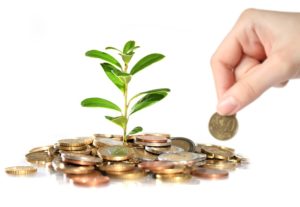 This is one of the most revitalizing policy changes a place can make. The land value tax levies high rates on the land itself, but none on its structures. Speculators are thus punished for sitting on blight, and redevelopers are thus rewarded for improving their properties.
This is one of the most revitalizing policy changes a place can make. The land value tax levies high rates on the land itself, but none on its structures. Speculators are thus punished for sitting on blight, and redevelopers are thus rewarded for improving their properties.
A fringe benefit is that most homeowners will see their tax bills drop, often by about a third. This helps prevent the negative feedback loop that kills so many places: devitalization reduces city revenues, so they raise property taxes, which drive out more residents, thus accelerating devitalization. The community doesn’t experience a revenue drop when revenue from homeowners drops, because tax receipts from vacant properties go up significantly…often doubling. In other words, you’re rewarding what you want more of, and punishing what you want less of. Put another way, such policy changes help retain the residents and employers you have, while attracting the investors and redevelopers you need.
The concept of a land value tax has been around since 1879, when Henry George suggested in it his book, Progress and Poverty. But it’s not in wide practice. Why? The usual story: the influence of money on politics. Commercial and industrial property owners are normally among the wealthiest people in any community, and are thus major campaign contributors to mayors an city council members. Doing what’s right takes more courage than one usually finds in elected officials.
“Tax policy has always encouraged land speculators,” said Ed Dodson, a former market analyst with Fannie Mae and professor at Temple University in a September 2019 GOVERNING article by J. Brian Charles. “It makes it easy for speculators to acquire and hold land and wait for public-private partnerships to come along with funds to pay them their profit for speculating.”
In the places where it has been tried and abandoned, the usual cause (other than lobbying by land speculators) is failure to reassess land values on a regular basis. Homeowners expect taxes to go up incrementally, and don’t complain much when they do. But if a city or county only reassesses land once every 10 or 20 years, land-based taxes suddenly shoot up, causing voter backlash. Structures often lose value as they age, but land almost always rises in value.
In the places where it’s still in use, the results have been spectacular. Pittsburgh has used land value tax in its Central Business District since 1997. Between 2009 and 2019, some $8.5 billion worth of downtown redevelopment has been completed or announced. But the major champion of land value taxation in Pennsylvania was Harrisburg mayor Stephen R. Reed.
Between 1960-1980, Harrisburg lost 800 businesses and a third of its population. In 1980, the U.S. Dept. of Housing and Urban Development (HUD) called it “One of America’s most distressed cities.” But by 2010, Forbes magazine was calling it “The second best place in the U.S. to raise a family.” The single most important factor in that dramatic turnaround was the adoption of 2-tiered property taxation.
This was pioneered by Reed, who was Harrisburg’s mayor from 1981-2010. He was frequently called “Pennsylvania’s most popular and successful mayor.” By reducing the “penalty” for improving property, Harrisburg catalyzed $3 billion of new investment. Rehabilitation of existing structures increased the city’s taxable real estate from $212 million to over $1.6 billion.
It should be noted that Mayor Reed also borrowed hugely for many dubious projects like sports stadiums and an incinerator, which ended up bankrupting the city. But that was in no way the fault of the land value tax, whose success led to that “irrational exuberance” (as Alan Greenspan might have called it). More recently, Minneapolis has been considering it.
Why don’t more cities use land value taxation? Once again, fear. Middle class and lower income property owners—in others words, most voters—are happy enough with the reduction in taxes the two-tiered system brings to them. But the wealthiest property owners/political campaign contributors see it (correctly) as a constraint on their speculative land investments. Value-capture funds and land taxes could go into the general tax revenues to fund education, police, fire services, etc. Or, they could go directly towards organizations doing revitalizing work.
For instance, Tybee Island, Georgia funds local non-profits from their 6% hotel/motel tax. The program has been so successful that—in January 2015—their mayor, Jason Buelterman, suggested raising the city’s annual contributions from $57,902 to over $100,000. He says activities of groups like the Tybee Island Historical Society attract tourists, while enhancing the quality of life for year-round residents.
Tax Increment Financing (TIF)
Tax increment financing (TIF) has financed far more redevelopment and revitalization work in the U.S. than any other tool or source. It’s probably the only financial tool that is fundamentally rooted in revitalization. TIF allows communities to borrow from the value of future revitalization in order to fund the work needed to make that revitalization happen now. If that sounds circular and self-referential, that’s because it is.

TIF chart courtesy of the City of Omaha Planning Department.
The basic process is this: the community draws a border around a blighted area and calls it a “TIF District”. A baseline of current tax revenues (if any) from that area is documented. Then, an estimate is made of the tax revenues that the District would be generating in 20 or 30 years if it were successfully revitalized. The difference between that figure and the baseline is the “increment”. The community then borrows against a portion of that increment, and uses the money to stimulate that revitalization.
Ideally, TIF funds don’t fund actual redevelopment itself: that’s mostly the role of the private sector. TIF funds are best used to pave the way for the private sector; performing infrastructure improvements and brownfields assessments (even remediation) that make a dead section of town more attractive to redevelopers.
One of the great benefits of tax increment financing: it enables “broke” communities to come to the public-private partnership negotiating table with cash. It also helps small places do large projects when necessary.
The first TIF was created in California in 1952. By 2004, all 50 American States had authorized the use of TIF. Due mostly to perceived risk, TIF has been slow to catch on in more-cautious nations.
As with any other good tool, people will find a way to twist it to their own selfish purposes over time. The practice of tax increment financing currently suffers from tremendous abuse, misuse and overuse. Political leaders abuse it by directing the funds to their friends, mostly in the form of unnecessary subsidies. Places misuse it to fund sprawl, rather than redevelopment. And some places overuse it to the point where their general tax revenues are depleted, making it harder to pay for essential services like schools and police. But none that malpractice detracts from TIF’s intrinsic value.
All three of those problems tend to result from a combination of insufficient transparency and revitalization ignorance. TIF is what’s known as a “value capture” mechanism. It’s unique in that it captures enhanced future value, and makes it available to spend in the present, so as to make that future value enhancement happen. It’s like economic time travel.
Many cities complain that overuse of TIF has damaged their school funding. But the Union Township of greater Cincinnati—recognizing the role of quality education in revitalization—announced in January of 2015 that a new high school would be constructed with TIF funding, using no taxpayer money. Sounds simple, but it’s a revolutionary innovation. Here’s a slogan that should guide all TIFs: “No taxation without revitalization!”
Each state has their own flavor of TIF. Some establish different qualifying conditions to allow for the creation of different types of TIF districts. Minnesota, for instance, allows for six district types: economic development, housing, redevelopment, renewal and renovation, soil condition, and hazardous waste substance subdivisions. Illinois allows TIF to be used for remediating blight, for conserving areas with many structures older than 35 years, and for promoting industrial parks in areas of high unemployment. With such definitional diversity, it’s little wonder that the unscrupulous find so many ways to subvert it for personal gain.
Another reason TIF is so commonly misused is that the enabling state legislation often fails to define “blight” in a rigorous manner. They are careful to use hard numbers in reference to blight, such as requiring that 60% of buildings in a prospective TIF District be substandard, or that 90% of the tax increment needs to be used to remediate blight. But they often forget to actually define blight well enough to avoid its being used for sprawl.
For an example of abuse, look at the billionaire Koch brothers. They’ve funded several foundations that extol the social benefits of free enterprise, while decrying government regulation, socialized medicine, public transit (they’re in the oil business) and public assistance to the poor. But even with their vast wealth, they aren’t above demanding unnecessary taxpayer subsidies to expand their businesses: they receive some $50 million in such handouts in an average year. Many see this as corporate socialism.
What does this have to do with TIF, you ask? In Enid, Oklahoma (population: 50,000), the Kochs planned to spend $1 billion expanding their Koch Nitrogen Plant (fertilizer). But they wanted the taxpayers of this small, working-class city to help them do it.
To accomplish that, the Kochs turned their private plant into a TIF District . This means that taxes which would have gone towards paying for schools, roads, police, etc. will go towards renovating their for-profit factory. This was blatant abuse of TIF, which should only be used to fund community redevelopment and revitalization. Large employers across America use similar forms of extortion. They threaten to leave communities that are desperate for jobs, demanding tax breaks, free land and subsidies…hardly the behavior of good corporate citizens.
In the old days, when most newspapers had investigative reporters, they would have blown the whistle on such a scheme. The only “exposé” of the Koch’s TIF abuse I know of was a lonely tweet from me to my 26,000+ Twitter followers, which is a pretty pathetic excuse for investigative reporting.
The only newspaper coverage I could find was in the local Enid News and Eagle, which ran a puff piece extolling the virtues of the plan (without explaining the cost to citizens). The article sounded like it came straight from the Koch’s PR team, sans editing. (It’s estimated that between 80-90% of all articles in the U.S. news media come from corporate and government PR agencies.)
Most cities spend TIF funds on repurposing and renewing properties. When they spend it on reconnecting the TIF District, it’s usually in the form of roads and telecommunications. That’s sometimes best, but Milwaukee, Wisconsin took an approach that’s often smarter: public transit. While it’s not unprecedented, using TIF for public transit certainly isn’t common.
They used $59 million worth of TIF funding to build the first phase of their $124 million “Hop” streetcar system. In May of 2019, Milwaukee Mayor Tom Barrett presented his plan to add another 2.4 miles to the 2.1-mile system, using another $51.8 million of TIF funds.
To fund the first phase, Milwaukee simply extended the lifespan of existing TIF districts. For the second phase, which extends it to their lakefront, a new TIF district is being formed. $47 million of the $51.8 million would extend the streetcar. The remaining $5 million would create a new public plaza connected to their downtown convention.
Jeff Fleming, spokesman for Milwaukee’s development department, explained that the city used federal grant dollars and TIF financing for the streetcar in order to keep local taxpayers from paying the costs. “Doing so tapped into the increased property values immediately surrounding the streetcar,” Fleming said in a September 13, 2019 Wisconsin Public Radio article. “There’s no question that property values are increasing within a quarter mile within the streetcar line.”
GreenTIF
Green Bonds and other new tools for funding the restoration/creation of green infrastructure (often for climate change resilience) are obvious candidates for funding such projects on a large scale. But the most overlooked source is that well-proven revitalization tool described above: tax increment financing (TIF).
We’ve talked about TIF’s longstanding role in funding community redevelopment (its original purpose). But I believe it has tremendous potential for funding the restoration of natural resources and green urban infrastructure.
Now, with the rise of metrics for monetizing ecosystem services—combined with the growth of resilience programs that require greater integration of our built, natural, and socioeconomic environments—the time has come for a new breed of TIF to emerge, which I’ll dub “GreenTIF™”.
– from “Change By Design” by Tim Brown, president and CEO of IDEO
Instead of—or in addition to—the usual property and sales tax base of urban TIFs, the GreenTIF could be funded by a combination of specific natural resource industry taxes, water fees, climate disaster insurance, and/or a new disaster prevention tax. The latter will likely emerge soon, in these days of climate change-related superstorms, floods, droughts, etc.
In December of 2014, the U.S. EPA published an excellent guide, “Getting To Green: Paying for Green Infrastructure.” Financing options and resources for local decision-makers.” But it contained not a single reference to value-capture mechanisms in general, or to TIF in particular.
A GreenTIF would differ from a regular TIF in three basic ways:
- It would generate its incremental value increase in large part from renewing the natural environment;
- It would be applicable to far larger areas, possibly entire watersheds or estuaries (such as Chesapeake Bay); and
- It would derive revenue from sources other than property and sales taxes.
There’s one more key differentiator: a GreenTIF would need to define “blight” in a different manner from the normal urban TIF. It might be based, for instance, on resource depletion, such as current oyster or crab harvest levels from a bay compared to historical levels.
Some major projects in the U.S. are already looking to apply TIF towards renewing the natural environment, though it’s usually in an urban setting. The billion-dollar-plus Los Angeles River Restoration Project is one. The aforementioned 11th Street Bridge project here in Washington, DC is also looking at TIF-like value-capture mechanisms to fund the bridge repurposing, as well as nearby ecological restoration and park creation along the Anacostia River shoreline.
Just as urban TIF funding sets the stage for increased private redevelopment via infrastructure and brownfields renewal, so too would GreenTIF funding set the stage for increased commercial usage via environmental restoration. Of course, the performance specifications would need to call for the restoration of the diverse ecosystem in which those commercial species or ecosystem services are found, not just for the increased production of commercial species (like blue crabs or striped bass in the Chesapeake) themselves. In addition to simply being the right thing to do, this would help ensure the resilience of the harvest.
One current project that moves the TIF needle a bit in this GreenTIF direction is in Maine. As you probably know, salmon farms—whether based in rivers, estuaries or the open ocean—are usually environmental disasters. They pollute the water with excess food, concentrated fish excrement, antibiotics and growth hormones. They also contaminate wild salmon stocks with genetically-modified fish that inevitably escape. And, their food comprises vast quantities of smaller wild fish, thus depleting food stocks for wild salmon, mackerel and other species.
A new company called Whole Oceans wants to become America’s premier, land-based producer of sustainable farm-raised Atlantic salmon. Their model is more sustainable than a normal salmon farm because it’s a closed system: no pollution—or fish—can escape. In 2019, they started building a state-of-the-art Atlantic salmon recirculating aquaculture system (RAS) facility in Bucksport, Maine.
This project will be one of the largest land-based aquaculture projects in the world. On July 12, 2019 the Town Council of Bucksport voted unanimously to create a TIF for the site of the former Verso Paper Mill, where the Whole Ocean facility is being built.
Whole Oceans’ development on a 90-acre portion of that site is expected to increase the property’s value by $42.2 million. If taxed at the town’s current tax rate of $16.30 for every $1,000 in property value, that increased value would translate into $13.7 million in new taxes paid by Whole Oceans in their first two decades of operation, amounting to $687,000 annually.
But with the TIF, the town will reimburse about 70% of the new taxes — $473,000 a year on average. That reimbursement would work out to $9.45 million over the 20 years. Whole Oceans will not have to pay property taxes for the first five years of the 20-year agreement on any new property value it creates from developing the salmon farm. It will pay 25 percent of its new property tax obligations over the subsequent five years and 50 percent for the remaining 10 years.
The first phase of the salmon farm’s development, estimated at $180.6 million, could create as many as 75 jobs. So, this should be a win for the town, the company and the environment (although their website doesn’t say what the salmon will be fed.) Granted, this isn’t a GreenTIF as described above, but it might help people start thinking of using TIFs for natural resources, rather than just urban redevelopment.
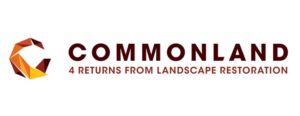 The ideal host for a GreenTIF would be an organization that has already embraced a holistic approach to environmental restoration, regenerative agriculture and rural economic revitalization. There aren’t any, you say? Take a look in Amsterdam, where a non-profit called Commonland was founded in 2013 by the IUCN Commission on Ecosystem Management, the Rotterdam School of Management of the Erasmus University, and a private foundation.
The ideal host for a GreenTIF would be an organization that has already embraced a holistic approach to environmental restoration, regenerative agriculture and rural economic revitalization. There aren’t any, you say? Take a look in Amsterdam, where a non-profit called Commonland was founded in 2013 by the IUCN Commission on Ecosystem Management, the Rotterdam School of Management of the Erasmus University, and a private foundation.
Commonland facilitates long term support to local people to restore degraded landscapes and ecosystems, generating inspirational, social, natural, and sustainable financial returns: what they call the “4 returns framework”. Commonland is closely aligned to the UN Decade on Ecosystem Restoration. Its focus is on developing Landscape Restoration Partnerships, and on developing businesses that are regenerative and nature-restorative, while capturing carbon and beautifying landscapes.
Over the past five years or so, they have focused in the field on building a “proof of concept” track record in four landscapes in South Africa, Spain, Australia and Netherlands. In 2018, the first “4 returns” company was listed on the Australian Stock Exchange.
In an email to this author, the CEO of Commonland, Willem Ferwerda said “Our strategy is to build bridges among farmers and local landowners, investors, companies and governments. That is our way to restore living and productive landscapes. It is not an easy way, but after six years of testing we believe that this 4 Returns approach is the best way to achieve long-term landscape restoration successes.” Of course, Europe isn’t yet TIF-friendly, so if the GreenTIF ever takes off as a concept, it will more likely do so here in the U.S, the home of TIF. But Commonland shows that restoration economy organizations are emerging that aren’t restricted to the usual silos.
It’s too early to go into any more detail about this nascent GreenTIF™ effort, but I intend to assemble a team to develop a basic, replicable, customizable model for just such a funding mechanism. Interested individuals and institutions are invited to inquire about involvement.
Adaptive Funding
There’s one advantage to the fuzziness surrounding the definitions of revitalization and resilience: it makes it easier to “adapt” money from well-funded sectors to important under-funded sectors.
Just as repurposing, renewing and reconnecting physical assets revitalizes communities, so too can repurposing narrowly-targeted, short-term financial assets and reconnecting them to serve broader, long-term agendas. In the process, we can also renew and expand project funding to serve programmatic goals.
The majority of such opportunities arise with infrastructure funding. This is partly because infrastructure projects are typically large, so earmarking 1% for resilience, for example, could yield millions of dollars. It’s also because infrastructure is the connective tissue of the urban and regional bodies, so it’s often a direct path to a strategy for renewing, repurposing, and reconnecting distressed or vulnerable properties and neighborhoods.
In 2012, U.S. Conference of Mayors estimated that American cities will invest some $4.8 trillion on water and wastewater infrastructure renewal in the coming 20 years. If just 1% of that got “repurposed” to more effectively connect to local resilience and revitalization agendas, the ROI of this money could easily be doubled.
As noted earlier, with the right strategy, many types of revitalization activities can also build resilience: infrastructure renewal, brownfields remediation / redevelopment, heritage renewal / reuse; watershed restoration; restorative agriculture; etc. Whenever natural, built, and socioeconomic assets are renewed, repurposed, or reconnected to create a greener, more inclusive economy, both revitalization and resilience are advanced.
In the February 2015 issue of Municipal World, an article titled “Heritage Builds Resilience” by Natalie Bull said, “…if infrastructure includes ‘the range of structures that enable, sustain, or enhance societal living conditions’ then governments need to think—and invest—more broadly. In fact, funds earmarked for infrastructure can and should include funding envelopes for investments in a community’s heritage assets. Certainly, Canada’s towns and cities are full of examples where investment in ‘heritage infrastructure’ has successfully generated economic vibrancy, as well as cultural and social benefits—all part of the recipe for resilient communities.”
An “adaptive funding” approach could help create a local resilient prosperity process with serious funding. If resilient prosperity is (as described earlier) “a feedback loop of rising levels of optimism, equitable wealth, quality of life, and environmental health, usually deriving from an ongoing, adaptive process of regeneration,” then it’s obvious that budgets focused on renewing virtually anything could fall within its purview.
Governor Patrick’s goal of promoting smart public investment that spur economic activity.”
– Energy and Environmental Affairs Secretary Richard K. Sullivan Jr. (April 4, 2012).
This wouldn’t necessarily mean defunding any existing agency. But the adaptive renewal megatrend will make it easier rectify some of the inefficiencies and dysfunctions arising from the current fragmentation of urban and regional governance and management.
A resilient prosperity agency, department, and/or director could be given some level of oversight over all such funding, helping to ensure that they comply with the strategic vision and goals.
Adaptive funding isn’t yet a formal practice: it’s currently just a practical expedient…something intelligent, creative people do when the project they love is starving. This lack of formal recognition doesn’t mean it’s small potatoes, though. Hundreds of billions of “re”-oriented dollars per year are “up for grabs” for managers of adaptive renewal.
A climate restoration economy based on numbers, assets and people.
 Since The Restoration Economy came out in 2002, I’ve had some clients—like Montana governor Brian Schweitzer—who grasped the need to quantify the economic and employment benefits of restoring watersheds and brownfields. He published the landmark Montana Restoration Economy report in 2009.
Since The Restoration Economy came out in 2002, I’ve had some clients—like Montana governor Brian Schweitzer—who grasped the need to quantify the economic and employment benefits of restoring watersheds and brownfields. He published the landmark Montana Restoration Economy report in 2009.
But that was primarily focused on watershed, fishery and brownfield regeneration: no one has properly documented the holistic revitalization of whole communities or regions, which would also include the regeneration of heritage, infrastructure, agriculture, ecosystems and disaster zones.
In 2012, The Nature Conservancy and Oxfam America held a Restoration Economy summit in Thibodeau, Louisiana for over 100 local leaders. Its purpose was to explore the job creation and economic revitalization potential of the post-BP oil spill restoration activities. In 2013, researchers at Yale and the University of North Carolina published a Restoration Economy report. So did US Fish & Wildlife in 2014. But it wasn’t until resilience joined the agenda that places worldwide finally started getting the message.
On a finite planet with a growing population, basing economic growth primarily on renewing the capacity of our existing natural and urban assets is obvious. Restoring our climate is an equally-obvious agenda (and growth industry), since not doing so will undermine virtually every investment we make. Since it might already be too late to reverse the cycle (no one knows for sure) then adapting to climate change and making places more resilient is a logical adjunct.
But the shift to healing and rebuilding is primarily happening locally, not at state or national levels. Restorative economics is gaining momentum, hopefully leading eventually to a rigorous “Revitalization On Investment” (ReOI?) metric. But we can’t capture those values until we climb out of our silos and get a better handle on that mysterious—but oh-so-desirable— outcome called “revitalization”.
Some cities run out of room for sprawl before others. Some countries (especially small island nations) run out of natural resources before others. In both cases, they are forced to switch to regenerative economic growth. If they go into adaptive renewal mode—using a reliable process for resilient prosperity—such places will become our “windows on the future.”
This doesn’t always mean renewing natural and built assets, however. Tiny, natural resource-poor Singapore became a global model of sustainable economic growth by regenerating their governance—making it more transparent and competent (accomplished in part by paying public servants very well, which reduces corruption)—and by regenerating the capacity of their citizens (via universal, high-quality education).
So let’s review what a non-resilient economy looks like. If your economic growth…
- …isn’t inclusive and equitable, it’s not resilient: lack of economic justice foments social unrest and crime;
- …isn’t based on regenerating natural resources and agricultural lands, it’s neither resilient nor growth: the productivity of watersheds, fisheries, biodiversity (such as pollinators), and topsoil must be restored to drive economic growth, not merely sustained. (“Fortunately,” most are already so damaged and deleted that significant improvements are readily attainable by even modest restoration efforts);
- …isn’t supported by good infrastructure and connectivity, it’s not resilient: the global economy is changing too fast to forgive inefficiency; and
- …is based on tax incentives, subsidies, and marketing, it’s not resilient: artificially-induced economic growth is usually ephemeral.
All of the above factors, when missing, lead to instability, insecurity, and inertia. This reduces confidence in the future, thus undermining economic growth. Merely tweaking the current economic and political system—rather than overhauling it into a regenerative model—is like having someone pointing a gun at your head, and trying to remedy the situation by making sure the gun is in good working order.
Regenerative Capitalism
—on, say, the production of goods, rather than on health, education, and the environment—
we become distorted in the same way that these measures are distorted.”
– Nobel Prize-winning economist Joseph Stiglitz.
Adam Smith’s widely misunderstood concept of the “invisible hand” of the market—a Godlike force he tossed into his book to mollify the Church, which ran the government and the economy at the time—has led most cities to believe, consciously or not, in a “magic hand of revitalization”.
They hope it will miraculously transform their haphazard renewal activities into revitalization, without their having to put any overt focus on achieving that outcome. In other words, they work for redevelopment, but pray for revitalization. As it says in the Bhagavad Gita, “We are kept from our goal not by obstacles, but by a clear path to a lesser goal.”
For decades, business leaders (especially Americans) have hewn to the gospel of the high priest of dollar-worship: the Nobel prize-winning economist, Milton Friedman. In response to activists who were calling on corporations to do less social and environmental harm, he said in 1970, “There is only one one and only one social responsibility of business: to engage in activities designed to increase its profits.”
Over the past decade or so, as business leaders have been forced to adopt at least the appearance of real social and environmental responsibility, myriad modifiers for the word “capitalism” have been suggested: “compassionate capitalism”, “conscious capitalism”, “shared value capitalism”, “green capitalism”, etc. My contribution to that ingredient-rich stew is “regenerative capitalism”.
Why? Because, as pointed out in The Restoration Economy, basing profit-making on activities that restore natural resources and revitalize communities doesn’t require any change of consciousness or human nature in order to do good. If they are done well, it’s an automatic outcome.
All Together Now
We’ll touch on various aspects of creating crisis recovery, economic revitalization and community resilience as a single coordinated, synergistic effort throughout this book, and will show how best to achieve in in Chapter 12.
For now, let’s end this chapter with a story. In June of 2016, much of the town of White Sulphur Springs, West Virginia (pop. 2444) was devastated by a historic flood.
Existing damage from previous floods, combined with an already-down economy, made this the last straw for many downtown business owners. They closed-up shop and left, seemingly sealing the fate of the community.
But a February 24, 2020 article by Tina Alvey in the The Register-Herald (Beckley, WV) said this: “…in the midst of the devastation, the people of White Sulphur Springs regrouped as a community, forming new bonds as they mourned their losses and found fresh determination not to simply rebuild, but to revitalize their town.”
The article continued, “Mayor Bruce Bowling, a lifelong resident of the town, isn’t surprised by the citizenry’s resilience and resolve to rebuild, but he is amazed at the pace of revitalization. ‘I never thought it’d happen this fast,‘ he said. ‘There have been so many people working together, so many people with resources that they’ve committed to White Sulphur.‘”










